
ST. LOUIS’ INDEPENDENT CULINARY AUTHORITY FREE, SEPTEMBER 2017 REVIEW POLITE SOCIETY P. 15 GUIDE TO DRINKING (FLIP THE MAGAZINE OVER) SAUCEMAGAZINE.COM ROMESCO REIGNS P. 26 ST. LOUIS' BEST PRETZELS P. 33 THE BUTCHER'S DAUGHTER

2 I SAUCE MAGAZINE I saucemagazine.com September 2017

saucemagazine.com I SAUCE MAGAZINE I 3 September 2017




What’s the best cocktail you’ve ever had in St. Louis?
SEPTEMBER 2017 • VOLUME 17, ISSUE 9
PUBLISHER
ART DIRECTOR
MANAGING EDITOR
MANAGING EDITOR, DIGITAL
STAFF WRITER
EDIBLE WEEKEND EDITOR
PROOFREADER
PRODUCTION DESIGNER
CONTRIBUTING PHOTOGRAPHERS
Allyson Mace
Meera Nagarajan
Heather Hughes
Catherine Klene
Matt Sorrell
Catherine Klene
Megan Gilmore
Michelle Volansky
Julia Calleo, Jonathan Gayman, Ashley Gieseking, Izaiah Johnson, David Kovaluk, Dave Moore, Greg Rannells, Carmen Troesser, Michelle Volansky
CONTRIBUTING ILLUSTRATOR
CONTRIBUTING EDITOR
CONTRIBUTING WRITERS
Vidhya Nagarajan
Katie O'Connor
Glenn Bardgett, Andrew Barrett, Katie Herrera, Heather Hughes, Kellie Hynes, Jamie Kilgore, Ted Kilgore, Catherine Klene, Kevin Korinek, Caitlin Lally, Marianne Moore, Meera Nagarajan, Michael Renner, Dee Ryan, Kristin Schultz, Stacy Schultz, Matt Sorrell, Stephanie Zeilenga
FACT CHECKER
ADVERTISING SALES MANAGER ACCOUNT EXECUTIVES
ADVERTISING ACCOUNTS COORDINATOR
EVENTS COORDINATOR LISTINGS EDITOR INTERNS
Lauren Schumacker
Allyson Mace
Matt Bartosz, Angie Rosenberg
Isabella Espinoza
Amy Hyde
Amy Hyde
To place advertisements in Sauce Magazine contact the advertising department at 314.772.8004 or sales@saucemagazine.com.
To carry Sauce Magazine at your store, restaurant, bar or place of business Contact Allyson Mace at 314.772.8004 or amace@saucemagazine.com.
All contents of Sauce Magazine are copyright ©2001-2017 by Bent Mind Creative Group, LLC. The Sauce name and logo are both registered to the publisher, Bent Mind Creative Group, LLC. Reproduction or other use, in
Once the weather cools, there's nothing better than a fireside seat and a barrelaged Manhattan at Dressel's.
Andrea Fandino, Caitlin Lally
whole or in part, of the contents without permission of the publisher is strictly prohibited. While the information has been compiled carefully to ensure maximum accuracy at the time of publication, it is provided for general guidance only and is subject to change. The publisher cannot guarantee the accuracy of all information or be responsible for omissions or errors.
Additional copies may be obtained by providing a request at 314.772.8004 or via mail. Postage fee of $2.50 will apply.
Sauce Magazine is printed on recycled paper using soy inks.
EDITORIAL POLICIES The Sauce Magazine mission is to provide St. Louis-area residents and visitors with unbiased, complete information on the area’s restaurant, bar and entertainment industry. Our editorial content is not influenced by who advertises with Sauce Magazine or saucemagazine.com.
Our reviewers are never provided with complimentary food or drinks from the restaurants in exchange for favorable reviews, nor are their identities as reviewers made known during their visits.
A $30 CHECK TO: SAUCE MAGAZINE – SUBSCRIPTIONS for a 12-month
4 I SAUCE MAGAZINE I saucemagazine.com September 2017 SAUCE MAGAZINE subscriptions are available for home delivery NAME STREET ADDRESS CITY STATE ZIP
subscription
Chouteau • St. Louis, MO 63103
SEND
1820
In a Pickle from Planter’s House. I love it so much I served it at my wedding.
The Way We Get By from Blood & Sand. Maybe not the best, but it was the most memorable.

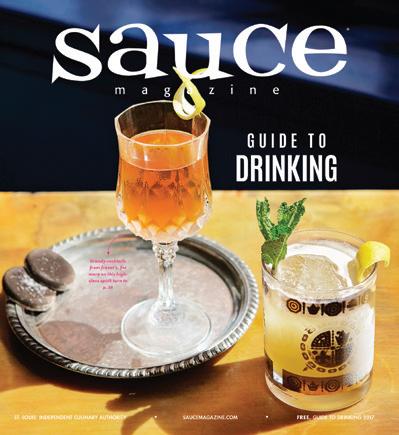
pork osso
at polite society,
15 PHOTO BY JONATHAN GAYMAN features 35 SHORT LIST: PRETZELS by kevin korinek 35 THE BUTCHER’S DAUGHTER by marianne moore COVER DETAILS THE BUTCHER'S DAUGHTER Dierbergs Markets culinary creative director Marianne Moore was inspired to get back in the kitchen after taking on butchery projects with her dad. Read the story and get the recipes on p. 35. PHOTO BY CARMEN TROESSER SEPTEMBER 2017 contents 7 EAT THIS Root Vegetable Tagine at Olio by meera nagarajan 8 HIT LIST 3 new restaurants to try this month by catherine klene 12 FIXATIONS From a bottle of bubbly to a cup of love, here’s what’s at the top of our shopping list right now. by heather hughes, catherine klene, meera nagarajan and matt sorrell 15 NEW AND NOTABLE Polite Society by michael renner 18 LUNCH RUSH Kalbi Taco Shack by stephanie zeilenga 21 NIGHTLIFE Tapped by andrew barrett 23 A SEAT AT THE BAR Four experts tell us what to sip, stir and shake by glenn bardgett, katie herrera and ted and jamie kilgore 25 ELIXIR Spirits Scholar by matt sorrell 26 EFFICIENT KITCHEN Romesco by kellie hynes 29 MAKE THIS Trout Livornese by dee ryan 44 STUFF TO DO by caitlin lally 46 WHAT I DO Alisha Blackwell-Calvert by catherine klene editors' picks reviews dine & drink last course FLIP THE MAGAZINE OVER TO SEE THE GUIDE TO DRINKING. Brandy sounds fancy for a reason. Read more about where brandy comes from and where it’s going on p. 26. Also in this year’s guide: Learn why you should be drinking natural wine, who’s making the best Bud Light Lime knockoff and which bars in St. Louis will make you feel right at home. Cover photo by Carmen Troesser
buco
p.




6 I SAUCE MAGAZINE I saucemagazine.com September 2017
editors' picks
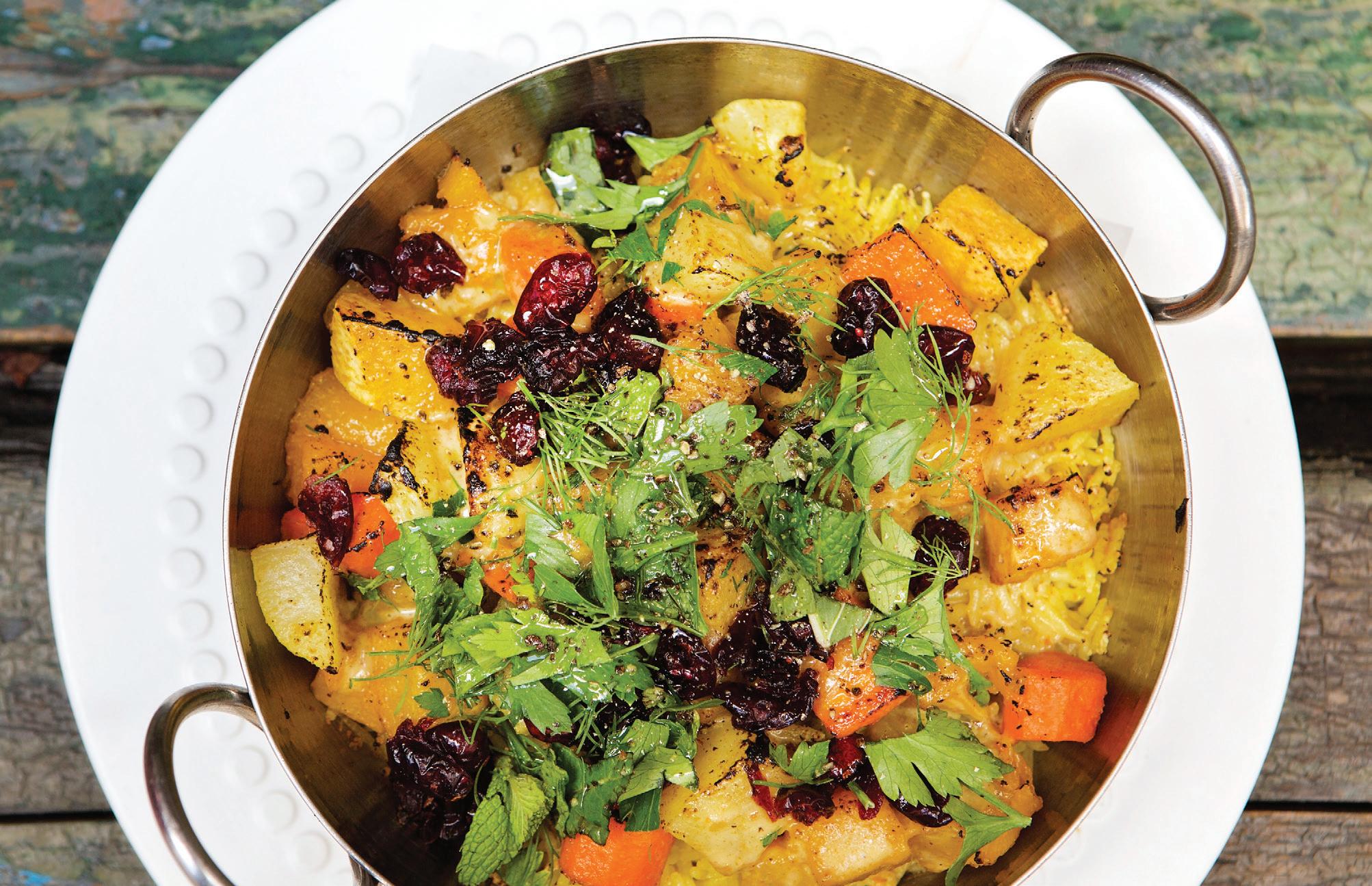
We are obsessed with the ROOT VEGETABLE TAGINE at OLIO. Turmeric-scented rice serves as the base for a plethora of root vegetables including rutabaga, parsnips, carrots and turnips. Their varied sweetness is complemented by coriander, cumin, ginger and the exotic flavors of cardamom and orange blossom. A handful of rehydrated cranberries provides a tart, fruity bite to this richly satisfying, aromatic vegetarian dish.
saucemagazine.com I SAUCE MAGAZINE I 7 September 2017 EAT THIS PHOTO CARMEN TROESSER
OLIO, 1634 TOWER GROVE AVE., ST. LOUIS, 314.932.1088, OLIOSTL.COM
hit l ist


banh
nudo house co-owners
qui

St. Louis-area ramen fans have flocked to Nudo House, the long-awaited noodle shop from Mai Lee’s Qui Tran and Marie-Anne Velasco. Step up to the counter and place your order, then watch the team fly in the open kitchen. Bowls of steaming ramen hit the tables – be sure yours is the Shroomed Out, an unctuous vegetarian option filled with springy noodles, rich soymilk-based broth and meaty braised king oyster mushrooms. It’s topped with baby bok choy, pickled bamboo shoots (menma), fragrant garlic oil and a glorious, gooey marinated egg. If you’re looking for something handheld, try the Banh Mi Pho Dip, Nudo’s take on a classic French dip. French bread is stuffed with tender shredded brisket, flank steak and the usual banh mi accouterments, and served alongside a cup of beefy pho broth. Finish your meal with a cone of the rotating house-made soft serve; keep an eye out for lychee and mango.
Monster food truck
Pie Hard eats normal-sized food trucks for breakfast. Chef-owner Michael Pastor stacked a 20-foot shipping container atop a flatbed, then added a 2½-ton pizza oven for good measure. The truck is making its way into St. Louis and the Metroeast for special events, but regularly parks outside its commissary kitchen to fire up 10-inch wood-fired pies. Put that massive rig to work and order pizzas like the Vladi with vodka sauce, pickled shallot, tender meatballs and crisp fried rosemary atop a toothsome, charred crust. Try a Mexican-inspired pie, the Al Pastor, with a sweet-savory mole sauce, shallot, thinly shaved pork belly, cheddar, queso fresco and wedges of sweet pickled pineapple. And save room for dessert: Pie Hard scoops house-made strawberry-balsamic ice cream between two sea salt chocolate chip cookies and tangy lemon gelato between light meringue disks.
8201 W. Main St., Belleville, 314.791.3514, piehardpizza.com
BING BING
The newest addition to The Loop’s international bill of fare is actually just off Delmar Boulevard. Bing Bing specializes in jianbing, a popular street food snack in China made up of eggy pancakes. Sturdy enough to handle like a burrito but thin enough to be mistaken for a crepe, these jianbing are offered in two styles: the cornmealbased Shandong style and the slightly more delicate mung bean-based Tianjin style. Each is filled with a jumble of flavors – smooth scrambled egg, crunchy wonton and slightly sour Chinese pickles. Add your choice of meat and sauce (the slightly sweet barbecue pork married well with the hoisin-like house sauce, while the golden crispy chicken played happily with the teriyaki-based traditional sauce), then watch as it’s all wrapped up to order.
11423 Olive Blvd., Creve Coeur, 314.274.8046, Facebook: Nudo House STL PHOTOS BY
567A Melville Ave., University City, 314.669.9229, Facebook: Bing Bing
8 I SAUCE MAGAZINE I saucemagazine.com September 2017
MICHELLE VOLANSKY
mi pho dip at nudo house
tran and marieanne velasco
shroomed out ramen at nudo house
NUDO HOUSE
PIE HARD
3 new restaurants to try this month

saucemagazine.com I SAUCE MAGAZINE I 9 September 2017

10 I SAUCE MAGAZINE I saucemagazine.com September 2017

saucemagazine.com I SAUCE MAGAZINE I 11 September 2017

Brillat Savarin
Parker’s Table cheesemonger
Simon Leherer called this French, barely-solid cow’s milk cheese the best triple creme in the world. Who are we to argue? 1 lb.: $30. Parker’s Table, 7118 Oakland Ave., St. Louis, 314.645.2050, parkerstable.com
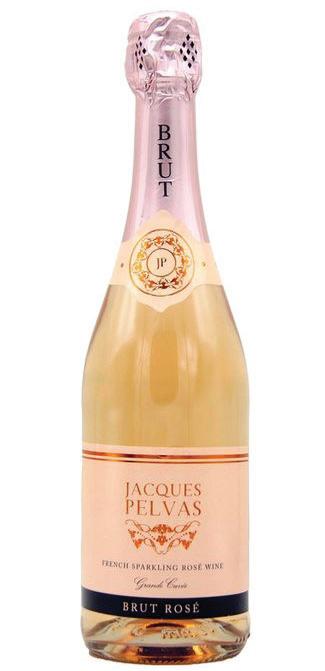
Jacques Pelvas Brut Rosé
This pale pink beauty has been our go-to aperitif all summer. You won’t find a better value bubbly in town. $11. The Wine and Cheese Place, 9755 Manchester Road, Rock Hill, 314.962.8150, wineandcheeseplace.com
Fixations
From a bottle of bubbly to a cup of love, here’s what’s at the top of our shopping list right now.

One bite of these crisp butter biscuit squares ensconced in velvety milk chocolate will have you saying words like “ensconced.” $3. Jay International Foods, 3172 S. Grand Blvd., St. Louis, 314.772.2552, Facebook: Jay International Foods

Sweetened with dates and sorghum and loaded with nuts, coconut and protein powder, this healthy postworkout snack also conveniently tastes delicious. 3-pack: $5. Revel Kitchen, 8388 Musick Memorial Drive, Brentwood, 314.647.2222, eatrevelkitchen.com

GoWISE USA 3.7-quart Air Fryer
This handy gadget uses hot air to cook with little or no oil – making fries you’d swear were dunked in a deep fryer. Just set the time and temp and go. $75. amazon.com

Ruler Bench Scraper
If the chef’s knife is your right hand in the kitchen, then this inchmarked bench scraper is your left.
$8. Lemon Gem Kitchen Goods, 4180 Manchester Ave., St. Louis, 314.696.2744, lemongem.com

Big Heart Tea
Local Big Heart Tea Co. sources the best teas, tisanes and chai from producers all around the world. We’re partial to Cup of Love – a soothing blend of rose and tulsi. $8.50 to $10.50. Larder & Cupboard, 7130 Manchester Road, Maplewood, 314.300.8995, larderandcupboard.com

Vero Pizza & Pasta meal kits
When you can’t make it to Katie’s Pizza & Pasta Osteria, these perfectly portioned meal kits can be delivered to your door. $55. Vero Pizza & Pasta, veropizzaandpasta.com
12 I SAUCE MAGAZINE I saucemagazine.com September 2017
Ritter Butter Biscuit
Birdie Balls




saucemagazine.com I SAUCE MAGAZINE I 13 September 2017

14 I SAUCE MAGAZINE I saucemagazine.com September 2017

rev iews

NEW AND NOTABLE
polite society
BY MICHAEL RENNER | PHOTOS BY JONATHAN GAYMAN
The preppy older gent dining alone at the two-top next to me started with a plate of chicken wings. After a few bites, a slight, sly expression emerged across his face. A surprising display of sublimity, I thought, for something as basic as a wings appetizer.
and notable POLITE SOCIETY p. 15 / lunch rush KALBI TACO SHACK p. 18 / nightlife TAPPED p. 21
saucemagazine.com I SAUCE MAGAZINE I 15 September 2017
new
All
reviews are conducted
Sauce
anonymously.
lacquered halibut at polite society
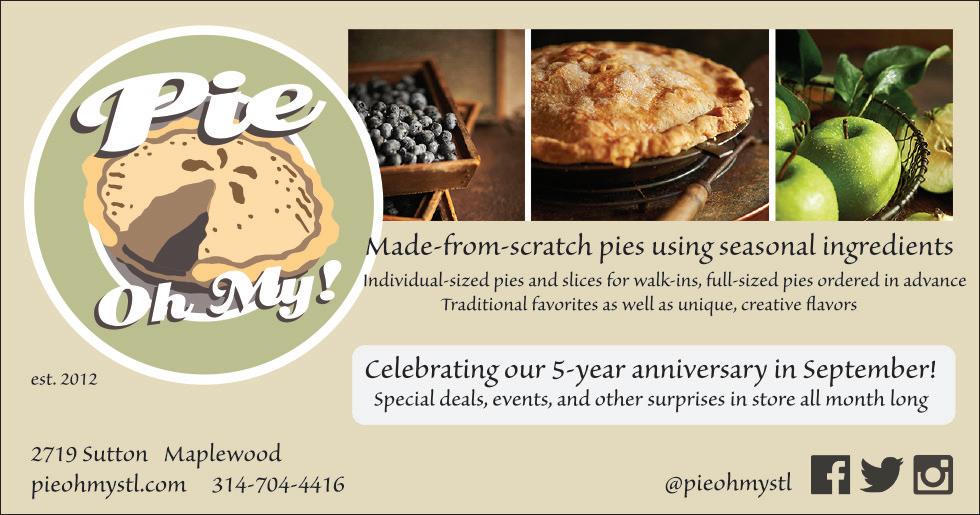



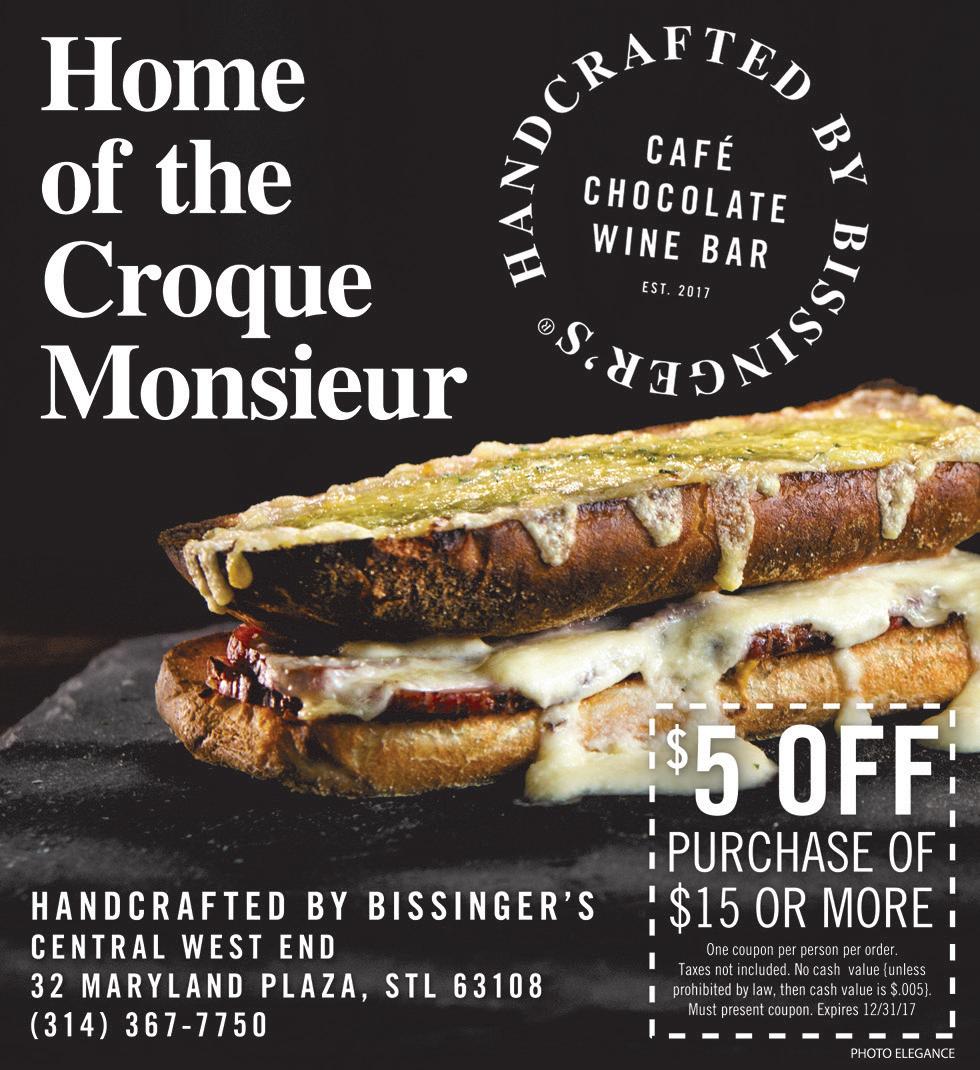
16 I SAUCE MAGAZINE I saucemagazine.com September 2017


Opportunities for such satisfaction abound at Polite Society, which opened quietly in Lafayette Square in March after many delays. The kitchen, helmed by executive chef Tom Futrell (previously at Scape) and sous chef Chris Kryzsik (Blood & Sand), has a knack for turning out simple food in deliciously unexpected ways. Like those confit chicken wings: slow-cooked in their own fat and deep-fried to a golden crispness with a juicy, meltingly tender texture. Their bed of pickled carrot-celery slaw and three accompanying dipping sauces – a creamy Cajun aioli, a hot-sweet
honey mustard and a not-as-hot-as-you’dexpect Sichuan sauce – showed further what good, basic cooking can accomplish.
Early last year, proprietors Jonathan Schoen (Scape, the restaurants at The Cheshire Inn, Bar Italia, Savor) and Brian Schmitz (Bar Italia, Grind Coffeehouse, Reference, Sol Lounge) acquired the space once home to Ricardo’s, the landmark Italian restaurant that closed in 2015 after a remarkable 26 years. The duo maintained the restaurant’s three-room structure, transforming each cozy section into
distinct experiences, all with storefrontsized windows. The bar section, which also serves as the main entry, is a stunner with hand-stenciled wallpaper and a fourtiered open shelving unit suspended above the bar. That bar is helmed by beverage director Travis Hebrank (Scape), who put together the house infusion-heavy drinks menu, including an impressive rotating selection of affordable house wines.
The two dining rooms incorporate many design elements de rigueur for any new restaurant, including exposed brick walls, Edison bulbs, hardwood floors and plank tables. Perhaps it was the built-in bookcases filled with presumably personal collections, or the willy-nilly way strings of those retro bulbs were arranged to hang from the tin ceiling, but the vibe felt more like the living room of a well-read friend’s stylish historic home than a contrived remodel.
The menu followed suit. Four categories of snack-y small plates provide diners with a variety of ways to combine dishes for noshing or sharing. Alongside cucumber gazpacho, a trio of deviled eggs (creamy, tangy yolk enhanced by cayenne, topped with fried capers and trout roe) proved a suitable snack while getting acquainted with the menu. While the capers provided a crispy, briny edge, the roe’s flavor was harder to discern. I loved the balanced, tart freshness of the gazpacho, artfully poured by the server from a petite carafe into a glass filled with croutons, cucumber, tomatoes, pickled onions and fresh herbs.
Entrees express the kitchen’s dexterity with seasonally driven, full-sized meals for vegetarians and carnivores alike. Take, for example, the beautiful lamb chops with port wine demi-glace – accompanied generously by English peas, heirloom carrots and mashed boniato (a white-fleshed cultivar
of the sweet potato). Mint pistou provided a subtle boost of flavor – and a nod-and-awink to traditional mint jelly sauce.
Come fall, I’m all in on the pork osso buco, a shank the size of a catcher’s mitt braised until the meat slides off the bone with barely a poke from knife and fork. Midsummer, that much blunt richness needed the contrasting bitterness of charred treviso (a variety of radicchio) and the acidity of marinated grape tomatoes. Polenta –funked up with herbs and goat cheese –stood in for traditional risotto.
The seared lacquered halibut was lean and fresh-tasting. It was one of the most perfect pieces of fish I’ve had in long while, made even more pleasing by its bed of chewy, aromatic jasmine rice congee and the expansive flavors of miso butter gently highlighted by ginger. The added combination of fiddlehead, garlic scapes, cauliflower, broccoli and sea beans made it a complete meal-in-a-bowl.
Chicken schnitzel is usually more comforting than impressive, which is probably why so many love it, but great schnitzel boils down to the details. Here, the kitchen pounds breasts to a uniform thickness, ensuring the cutlets have plenty of surface area for panko breading (the key to a crunchy crust that won’t burn and dry out when fried). Austrian potato salad –dressed in mustard vinaigrette with tarragon and shallot – and balsamic-dressed greens brightened the dish, as did lemon slices.
At the end of his meal, the older gent at the neighboring table put on his reading glasses, paid his bill and left as a couple servers politely addressed him by name and said they looked forward to seeing him again soon, while I was left thinking: everything clicks at Polite Society. The vibe feels right, the service is relaxed yet professional and attentive, and the food makes simple dishes exciting again.
saucemagazine.com I SAUCE MAGAZINE I 17 September 2017
NEW AND NOTABLE p. 2 of 2 reviews the dining room at polite society Where 1923 Park Ave., St. Louis. 314.325.2553, politesociety stl.com Don’t Miss Dishes Pork osso buco, confit chicken wings, lacquered halibut Vibe Elegant and stylish, in a sophisticated historic home sort of way – only much, much louder Entree Prices $15 to $36
A GLANCE polite society When Daily – 5:30 p.m. to 1 a.m., Sat. and Sun. brunch – 10 a.m. to 2 p.m.
AT
kalbi taco shack
BY STEPHANIE ZEILENGA | PHOTOS BY DAVID KOVALUK LUNCH RUSH
The aptly named Kalbi Taco Shack on Cherokee Street’s Antique Row is a no-frills operation. But that’s not a mark against it – the casual setup reveals a focus on the Asian-Mexican fare coming out of the kitchen. Both the adored cuisines are craveably combined with a variety of meats, gooey cheese, fresh vegetables and condiments both creamy and fiery in chooseyour-own adventure dishes.


BANH MI
I’ll scarf down any banh mi, that happiest of marriages between Vietnamese and French influences. That said, Kalbi’s didn’t disappoint. This delicious sandwich starts with a crispy baguette with a soft, chewy interior. I tried mine with the sweet and spicy pork. Like most of the meat options here, it was fairly standard – I wouldn’t have minded a heavier hit of heat – but the meat was layered with vegetables and condiments, resulting in a medley of
tastes and textures. Sliced cucumbers, daikon radish and sweet pickled carrots provided a cooling, satisfying crunch, while spicy jalapeno slices were counterbalanced by Kalbi’s signature aioli, a creamy, garlicky sauce laced with a hint of Sriracha.
BURRITOS
My first thought upon biting into Kalbi’s burrito: This would be hangover heaven. A flour tortilla, grilled just enough to give it a slight crunch, is stuffed with your choice of protein, along with jasmine rice, Jack and cheddar cheeses, pickled carrots, romaine, cilantro, sour cream and aioli. I went with teriyaki chicken, which was as unnoteworthy as the pork. Still, the other ingredients combined to such addicting effect that the burrito would be worth ordering with any menu choice. I loved that it’s hefty enough to satisfy,
but not so overstuffed that you can’t pick it up. Each bite delivers a little bit of everything.

RICE BOWLS
Essentially a burrito minus the tortilla, Kalbi’s rice bowl packs plenty of ingredients into one cohesive dish. I chose the beef short ribs (kalbi in Korean), which ended up being the best meat on offer with deep, sweet-umami flavor. The ribs, along with jasmine rice and a fried egg provided bulk and richness, while romaine
lettuce, sweet pickled carrots and radish lightened things up. Like all good bowls, a lot of elements are at play here: soft, snappy, rich, refreshing, sweet and spicy. Be sure to top it off with a drizzle of sweet and spicy chile sauce to pull the whole dish together with heat and tang.

TACOS
Kalbi Taco’s namesakes are hardly revolutionary, but craveworthy nonetheless. Corn or flour tortillas are topped simply with a crisp, punchy Asian slaw and Kalbi aioli and served with a lime wedge. The rich beef short
rib provided a tantalizing counterpoint to the cooling slaw, creamy aioli and tart lime. The jackfruit, marinated in a sweet and spicy sauce, was reminiscent of pulled pork – a worthy addition to the vegetarian offerings.
THE DOWNSIDE
I was less wowed by the quesadilla. Already filled with Jack and cheddar cheeses, including both sour cream and Kalbi aioli was overkill. The addition of some vegetables would have helped lighten things up.
Kalbi Taco Shack 2301 Cherokee St., St. Louis, 314.240.5544, kalbitacoshack.com
18 I SAUCE MAGAZINE I saucemagazine.com September 2017
LUNCH RUSH reviews

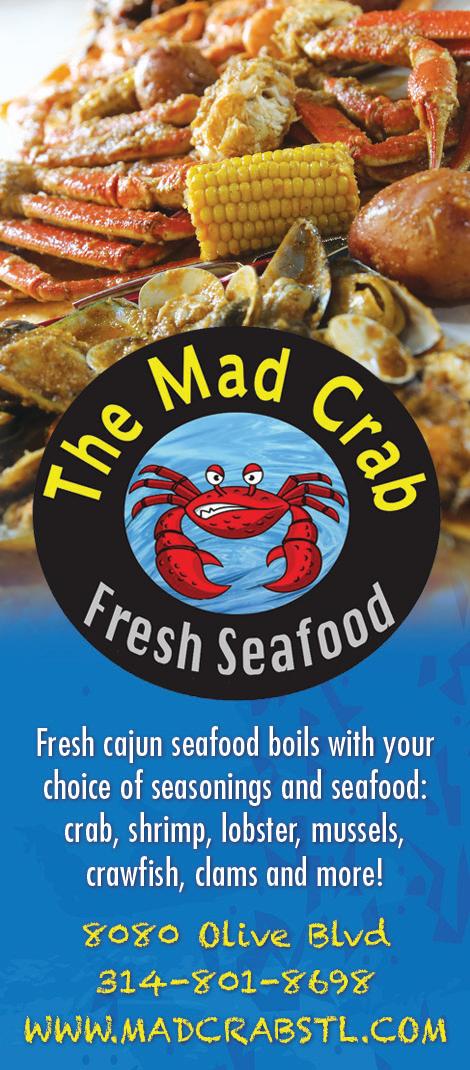


saucemagazine.com I SAUCE MAGAZINE I 19 September 2017



20 I SAUCE MAGAZINE I saucemagazine.com September 2017
tapped
BY ANDREW BARRETT | PHOTOS BY DAVE MOORE

At the newly opened Tapped in Maplewood, there’s no need to fear diving into that tempting blueberry maple Imperial stout that would normally pose too big a risk. You need only hold your credit card-linked electronic bracelet to the stout’s marquee plaque, pull the tap of the self-serve system and a splash of suds is yours to test for just a few cents per ounce. Each tap features a touchscreen that describes the beer, but the beauty of this bar is in ignoring all that and just trying them all. The future is now.
I will probably always feel like a dork swiping an electronic bracelet and cranking out beer from behind an iPad, but the iPourIt system is flawless; I never saw it fail or bug out on any of my visits.
My tabs were always accurate, and the beer selection has been steadily improving since Tapped opened in May, incorporating more interesting and varied local brews.
On my visits, all the drinks were sorted on the chalkboard by type. With no fixed sizes, I was able to enjoy favorites like Ferguson Brewing Co., Modern Brewery and 4 Hands Brewing Co., and still try some new breweries. There were also eight wine taps available for the beer-averse (definitely not a problem I have) with a good mix of reds and whites.
Tapped is the place to go with a mixed group of all kinds of drinkers. It’s easy, with endless options for finicky friends, where patrons can drink as much or as little as they’d like
without drawing attention to either. Even the glassware gives you choices with pints, Pilsner glasses, tasters and stemware, and I got pretty into the glass rinsers built into the drip tray. It’s ideal for combining the initiated and unadventerous, but the vibe isn’t what you’d expect from a beer spot. A perplexing mix of restaurant and bar, you have to be seated at a table, which brings the focus off the beer and toward your group.
This place isn’t for minglers. It doesn’t have that lively, clinking-bottles background noise of a traditional bar experience. You can sit at a “bar” facing the taps, which is cute, but that just means you stare at people’s backs while they swipe through beer descriptions.
Food is ordered at the wood-fired oven station: tap (of course) your bracelet on the ordering pad, and an employee punches up your munchies. Pizza is the thing worth ordering. Baked in the aforementioned wood-fired oven, it’s a little more casual style with thicker crust than Neapolitan. Pies are cooked exactly right to come out melty and crisp. Go for the Tapped Deluxe (why choose?) or the beautiful combination of pepperoni and artichoke.
The robots are coming for all our jobs, but Tapped shouldn’t worry any bartenders. While it was a treat to be able to go back easily for just one more swig to see if I really liked that Earthbound ESB as much I thought (I did), nothing can replace good service. Without that personal connection, interaction with the staff was a little weird. When I was there, the crew started putting chairs up on tables an hour before close. I’m not one to keep servers past last call, but there wasn’t even a call. This happened on more than one visit, and was much more uncomfortable than the giant robot keg. At the end of the night, I missed having a bartender friend to wave to on the way out.
However, if you don’t care about the traditional bar experience and just want a family-friendly spot to try a lot of different beers, Tapped has you covered.
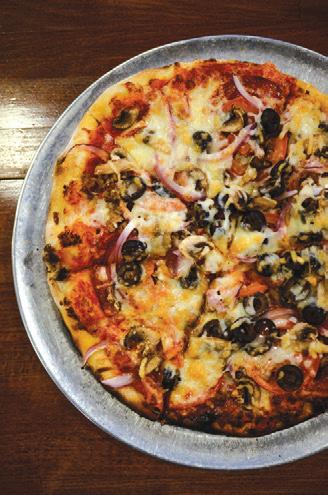
The wood-fired Tapped Deluxe pizza comes topped with sausage, pepperoni, mushroom, onion, black olive and tomato.

Pour your own pint from a wide selection at selfserve taps
saucemagazine.com I SAUCE MAGAZINE I 21 September 2017
ORDER IT tapped
Tapped 7278 Manchester Road, Maplewood, 314.889.0011, tappedstl.com
NIGHTLIFE reviews




22 I SAUCE MAGAZINE I saucemagazine.com September 2017
dine & drink

take your painkiller to the next level with big o ginger liqueur
A SEAT AT THE BAR / Four experts tell us what to sip, stir and shake

TED AND JAMIE KILGORE
USBG, B.A.R. Ready, BarSmart and co-owners/bartenders at Planter’s House
A truly local product, Big O Ginger Liqueur is a favorite in our drinking repertoire. With lush hints of cinnamon, allspice and clove wrapped around fresh ginger, it’s great for enhancing and updating classic recipes. Try it in a Big O Painkiller: In a shaker, combine 4 ounces pineapple juice, 1½ ounces aged rum, 1½ ounces Big O, 1 ounce cream of coconut and 1 ounce orange juice. Dry shake (meaning no ice) to combine, then pour into a large glass filled with crushed ice. Garnish with a pineapple wedge and enjoy! $32. Wine Merchant, 7817 Forsyth Blvd., Clayton, 314.863.6282, winemerchantltd.com

GLENN BARDGETT
Member of the Missouri Wine and Grape Board and wine director at Annie Gunn’s
On a recent visit to the Martin Brothers Winery in Hermann, I discovered one of my new favorite beverages: Wildflower Dry Mead made from 100-percent wildflower honey. While still noticeably honey-like, this version of the ancient elixir was so well balanced that it paired well with savory foods. Imbibing with sushi made for an eye-opening complement, and the fruity honey flavors played nicely with wasabi. $20. The Wine and Cheese Place, 7435 Forsyth Ave., Clayton, 314.727.8788, wineandcheeseplace.com

KATIE HERRERA Co-founder of Femme Ferment and account manager at Craft Republic
In the dynamic world of beer, Odell Brewing Co. has the next new thing: Rupture Fresh Grind Ale . Odell uses a house-made grinder to crush entire fresh hops and rupture (get it?) the lupulin housed inside each cone. The ground hops give the beer an insanely fresh hop aroma full of citrus notes without a lot of added bitterness. With year-round availability, this light-bodied beer will be adored by hopheads everywhere. Friar Tuck Beverage, 9053 Watson Road, Crestwood, 314.918.9230, friartuckonline.com
saucemagazine.com I SAUCE MAGAZINE I 23 September 2017 ILLUSTRATIONS BY VIDHYA NAGARAJAN; PHOTO BY JONATHAN GAYMAN




24 I SAUCE MAGAZINE I saucemagazine.com September 2017
SPIRITS SCHOLAR
BY MATT SORRELL
Tall, bespectacled and often bow-tied, Andrew Lucido has quietly and steadily climbed the ranks to become one of the area’s most respected barkeeps, evidenced by his current gig as bar manager of the venerable Taste, a position he assumed earlier this summer.
Before Lucido ascended to such lofty heights, he started working in the industry as a busser at Mangia Italiano when he was 16. He got behind the bar there shortly after turning 21, and has since worked at some of the best and most eclectic bar programs in the city.
He got his first taste of the cocktail life at Sanctuaria and developed a passion for the craft. Lucido followed his tenure there with a stint at Juniper, where he eventually became bar manager and committed to the job as a career path.
“ When I was over at Juniper, I thought, ‘I really love this, and it’s what I want to do with the rest of my life,’” he said. “It’s always been a part of what I’ve done, but it became the thing I wanted to do.”
It was his next step that pushed Lucido to the forefront. He began working at Olio, Ben Poremba’s casual companion to fine-dining Elaia, and then helped open and run Poremba’s upscale
Italian eatery, Parigi. After becoming the company’s beverage director, Lucido set up the bar program at Poremba’s acclaimed Mexican restaurant, Nixta, which garnered him local attention along with a mention in Imbibe for his original cocktails including The Ocho, made with mezcal, grapefruit, lime, maraschino liqueur and a house-made ghost chile tincture.
As befits someone with a history degree and a bent toward bookishness, Lucido is most inspired by the opportunity to learn.
“I’ve always wanted to be places where I was learning and could expand my craft,” he said. “It was very daunting [going to Taste], because Taste has such a huge reputation inside and outside of St. Louis. But I knew I’d be going somewhere I could create cocktails I wanted to create and do what I wanted to do with a lot of freedom.”
But the thing that really sets this freedom-seeking host of Taste’s Tiki Sundays apart isn’t just his range after heading up southern, Mediterranean, Italian and Mexican bars or his ability to balance a laundry list of ingredients. It’s his grounding in the classics, and his knack for artfully blending few ingredients well, without going over the top.

JANUS
Courtesy of Taste Andrew Lucido
1 SERVING
Named after the Roman god, this drink boasts fresh orange, dark chocolate and a bitter finish with some cool menthol to even things out.
1 oz. rye
1 oz. gin
½ oz. Averna
1 20-mL bottle Underberg Natural Herbal Bitters Orange twist, for garnish
• Combine the rye, gin, Averna and bitters in an ice-filled shaker. Stir 20 seconds and strain into a chilled rocks glass with ice. Garnish with the orange twist.

Taste
4584 Laclede Ave., St. Louis, 314.361.1200, tastebarstl.com
saucemagazine.com I SAUCE MAGAZINE I 25 COCKTAILS March 2017
PHOTOS BY IZAIAH JOHNSON
andrew lucido
romesco sauce
BY KELLIE HYNES // PHOTOS BY JONATHAN GAYMAN
I’m clinging to summer like a pool float in the deep end. I love fresh produce, minimalist cooking and dining alfresco, but if I’m being entirely honest, a small amount of culinary ennui from too many breezy brat-and-beer meals has set in, too. So this month, I’m toe-dipping into next season’s fare with homemade romesco sauce. Hailing from the Catalonia region of Spain, romesco is made from your favorite summer veggies, roasted for
SAVORY CAPRESE PANINI
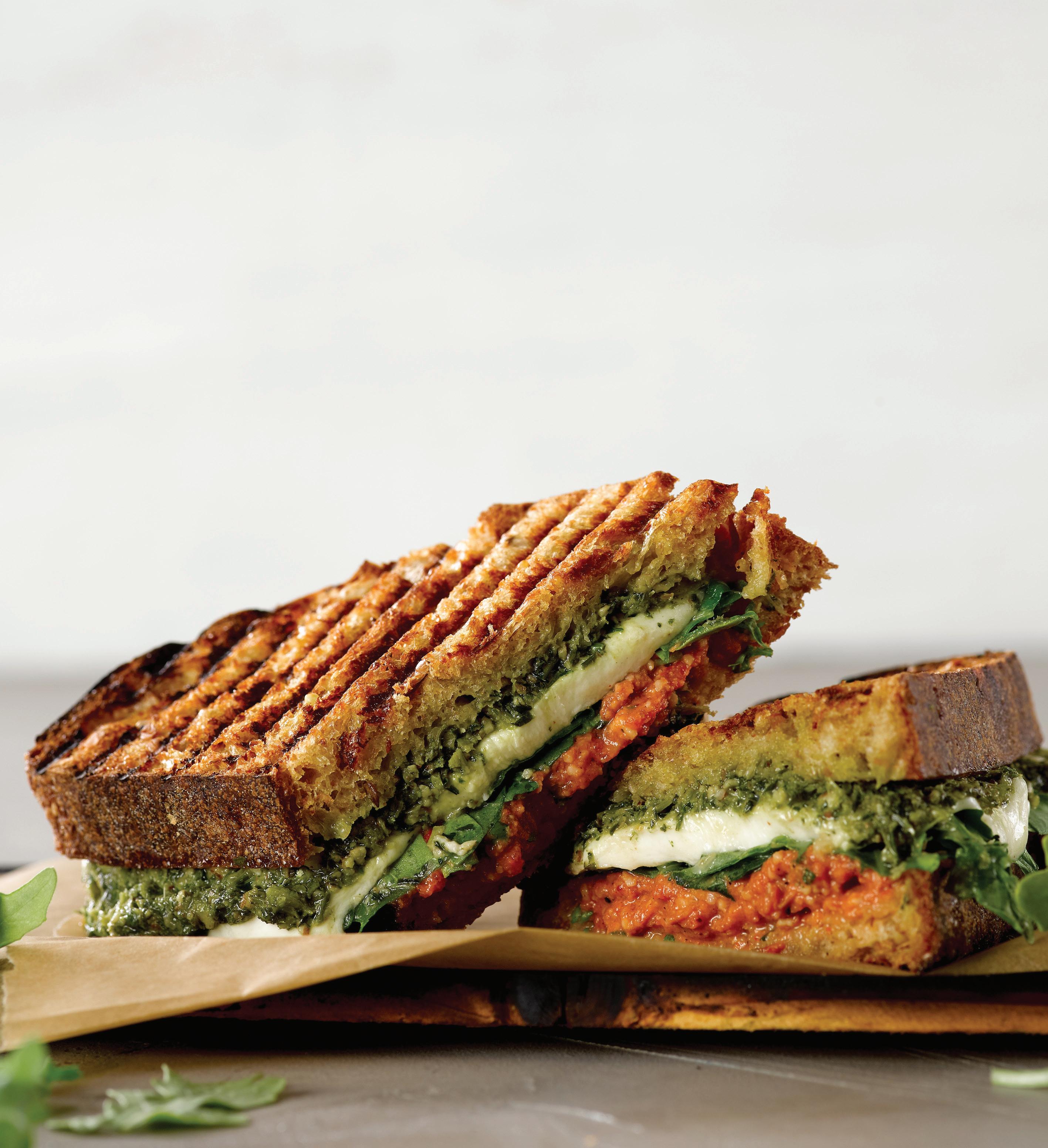
flavor that is deep, rich and savory. Put down your flamingo raft and prepare this smoky sauce right now – transforming everything from fish to beef to poultry, romesco is worth your full attention.
Roasted red bell peppers are the foundation of romesco. Because I’m not emotionally prepared to run my oven longer than a firefly flash, I shoved the pepper under my broiler and tossed roma tomatoes onto the
pan next to them to temper their acidic taste.
Roasted garlic adds flavorful buttery notes to romesco. When you make this game-changer recipe, you’ll also learn how to “roast” fresh garlic on the stovetop. This will change your life (or at least the way you cook garlic). Instead of soaking a whole head in olive oil and cooking it in a hot oven for the better part of an hour, I saved time and calories with this technique.
EFFICIENT KITCHEN
Just separate the garlic into cloves (leaving their skins on) and drop them into a hot, dry skillet. After 15 minutes, peel away the blackened skins and behold soft, creamy garlic that is every bit as delicious as the more demanding version. If you want to earn your efficient cooking badge, toast your almonds in the same pan during the last few minutes. Working around a nut allergy? Substitute a handful of pumpkin or sunflower seeds for protein and heft.
Mix all the ingredients in a food processor or blender. (If you’re using a blender, let everything cool to room temperature first. Hot ingredients will literally blow the top off a blender, and the only thing romesco doesn’t go with is a white ceiling.) Romesco adds round flavor notes to any dish that plays well with tomatoes. In panzanella? Divine. With mozzarella? Craveworthy. Over fish and chicken? New again. But my favorite way to enjoy romesco is as a poolside dip for carrots and crusty bread. It’s simple and comforting, just like these last hazy days of summer.
ROMESCO SAUCE
ABOUT 1¼ CUPS
2 Roma tomatoes, halved
1 large red bell pepper, halved with seeds and stems removed
4 garlic cloves, skin on
¹∕³ cup almonds
1 Tbsp. olive oil
½ tsp. kosher salt
¼ cup loosely packed flat-leaf parsley
2 Tbsp. tomato paste
1 Tbsp. sherry vinegar
½ tsp. smoked paprika
1∕8 tsp. chile powder
• Preheat the broiler and cover a broiler pan with aluminum foil.
• Place the tomato halves and bell pepper cut-side down on the pan, pressing the peppers so that they flatten. Broil 5 inches from the heat source until the tomato is charred, about 5 minutes. Use tongs to transfer the tomatoes to a bowl. Broil the pepper an additional 3 to 5 minutes, then add to the bowl and cover with plastic wrap. Allow the vegetables to rest 15 minutes, then uncover, peel and discard the charred skins. Set aside.
• Place a dry skillet over medium heat. Add the garlic and cook 10 minutes, shaking the skillet so
the garlic browns evenly. Add the almonds and cook 5 more minutes, stirring frequently. When both garlic and almonds are browned, remove from heat and allow to cool. Remove and discard the garlic skins.
• Add the garlic, almonds, olive oil and salt to the bowl of a food processor fitted with the S blade attachment. Pulse until the ingredients are minced. Scrape down the bowl, then add the roasted tomatoes and bell pepper, parsley, tomato paste, vinegar, paprika and chile powder. Run the food processor until the romesco is mostly smooth, 10 to 15 seconds. Taste and add more chile powder if desired. Refrigerate in an airtight container up to 5 days, or freeze up to 3 months.
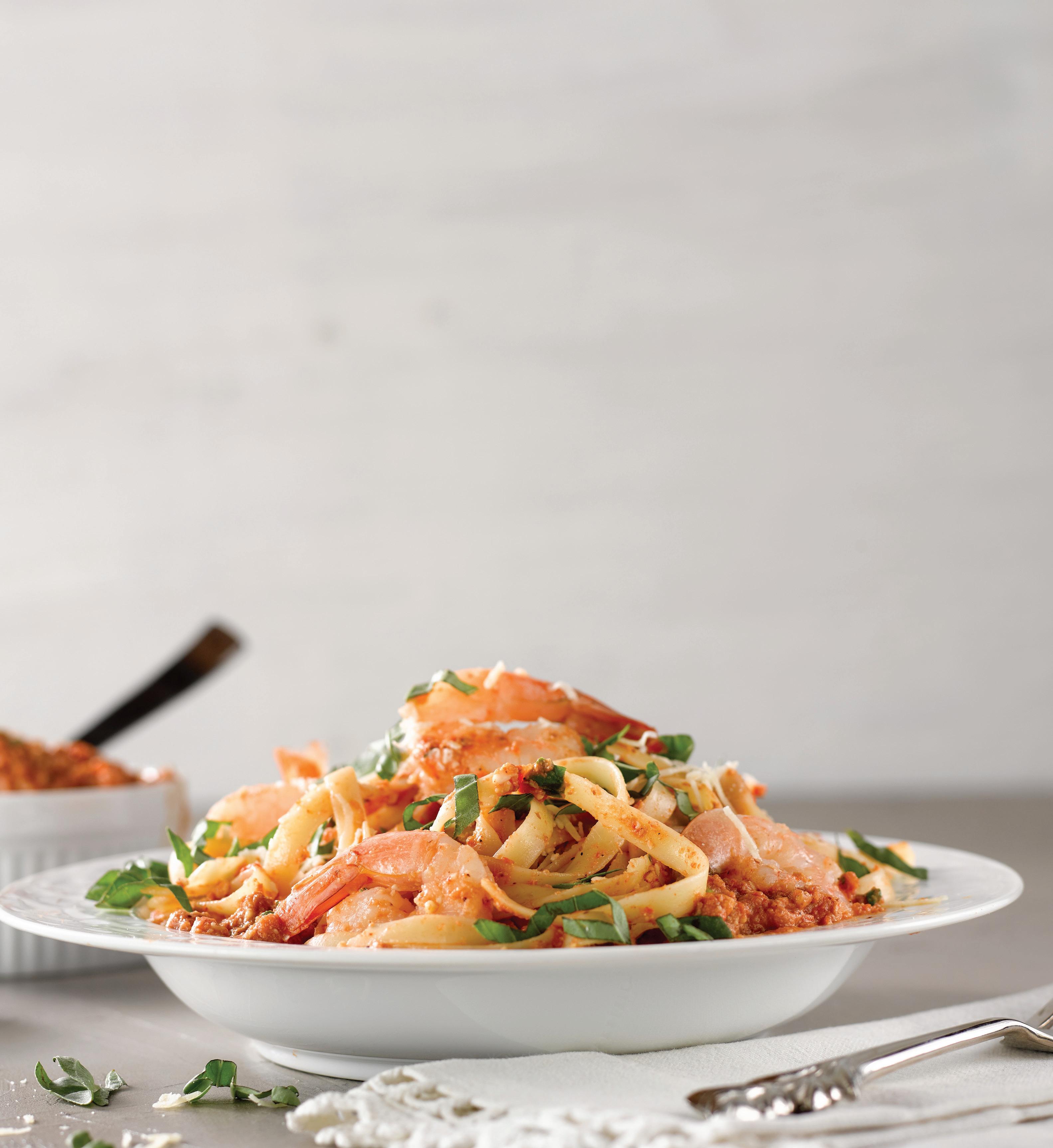 Savory Caprese Panini
Savory Caprese Panini
Spread 2 thick country bread slices with ½ teaspoon butter each. Spread 2 teaspoons romesco sauce on the dry side of 1 piece and 1 teaspoon pesto on the other. Layer ¼ cup spring mix lettuce and 1½-ounce fresh mozzarella slices over the romesco and top with the other slice of bread, pesto side-down.
Place on a panini press or griddle pan over medium-high heat and cook until toasted, 2 to 3 minutes per side.
Grilled Broccolini
Toss ½ pound trimmed broccolini with 2 teaspoons olive oil, ¼ teaspoon red pepper flakes and 1 8 teaspoon kosher salt. Grill over medium heat until charred, about 4 minutes per side. Serve drizzled with 2 tablespoons romesco sauce.
Baked Tilapia
Preheat the oven to 425 degrees. Place 2 tilapia fillets in a baking dish prepared with cooking spray. Brush the fillets with 2 tablespoons romesco sauce and top with thin slices of lemon. Sprinkle with 1 8 teaspoon kosher salt. Bake until the fish flakes, 10 to 15 minutes. Garnish with fresh cilantro or parsley.
Shrimp Linguini
Cook 1 pound linguine in salted water according to package directions. Drain, reserving ½ cup cooking water. Add the cooking water to 2½ cups romesco sauce and toss with cooked pasta. Stir in 1 pound cooked shrimp and ¼ teaspoon red pepper flakes. Garnish with ¼ cup shredded Parmesan and 2 tablespoons chopped basil.
SHRIMP
LINGUINI




28 I SAUCE MAGAZINE I saucemagazine.com September 2017
MAKE THIS
TROUT LIVORNESE
ACTIVE TIME: 10 MINUTES

A thin fillet like trout, tilapia, flounder or sole will get this dish to the table lickety-split. If you have an extra 10 minutes you can also try it with cod, halibut, swordfish or sea bass.
Named for Livorno, Italy, this flavorful stovetop dish is perfect when summer’s heat still lingers, but there’s less time for leisurely cooking. In a large nonstick skillet over mediumhigh heat, saute 2 cups chopped tomatoes, ½ cup chopped kalamata olives, ½ cup chopped red onion, ¼ cup chopped capers, 2 cloves minced garlic and ¼ teaspoon red pepper flakes in 3 tablespoons olive oil until fragrant, about 4 minutes. Push the tomato mixture to the edges of the skillet and add 4 trout fillets. Squeeze half a lemon over the fish, cover and cook 4 minutes. Plate the fish and top with the tomato mixture and chopped parsley. Garnish with lemon wedges if desired and serve with toasted bread, rice or couscous. – Dee Ryan
saucemagazine.com I SAUCE MAGAZINE I 29 September 2017
MAKE THIS PHOTO BY JULIA CALLEO






30 I SAUCE MAGAZINE I saucemagazine.com September 2017

saucemagazine.com I SAUCE MAGAZINE I 31 September 2017






32 I SAUCE MAGAZINE I saucemagazine.com September 2017
SHORT LIST
pretzels

Charleville Brewing Co. & Tavern
2101 Chouteau Ave., St. Louis, 314.241.4677, charlevillebeer.com
The pretzel at Charleville is made with spent grain – that’s the grain left over from the beer-brewing process – and comes out with a glowing, blond hue. The top is salted and slathered in butter, which pools at the bottom of the plate and soaks the base of the crust that’s dredged in leftover grain. The dough is heady with a hint of nuttiness in the aftertaste, and when you pull it apart, it doesn’t tear – it shreds. The rosemary whole-grain mustard offers an initial hint of sweetness, but it is spicy enough to singe your nose hair. Order with a pint of house Half Wit Wheat for the perfect pairing.
Is there anything better equipped to satiate hunger and simultaneously increase thirst than the pub pretzel? I haven’t found it. A bready, delicious heft of hot, salty carbs served with mustard and cheese for slathering, washed down with a cold pint, it’s the perfect feast. While the pretzel is decidedly German, it has taken on a life of its own in St. Louis. Here are three of the best house-made pretzels this side of the Rhine. Kevin Korinek

Das Bevo
4749 Gravois Ave, St. Louis, 314.396.6900, dasbevo.com
Recently opened in Bevo Mill, Das Bevo is already making headway with its pretzel game, relying on the skills of Anne Cronin (the pretzel maker who also sells her goods at the Arnold Farmers Market). These beauties come German-style, two by two, with a hot, crunchy crust that bounces back if you give it a pinch. The extra heap of salt on top means you’ll need nothing less than a pitcher of Griesedieck to accompany them. Enjoy with both house-made grain mustard and beer pub cheese sauce on the side.

Union Loafers Café & Bread
The pretzels at this first-rate bakery have a rustic personality. They are handmade daily in the classic knot shape (with a gentle twist at the top) and finished with a lovely scatter of big, square Maldon salt flakes. Less buttery than some, these Bavarian-style beauties take a generous lye bath for a dark color and a thick, chewy crust. The house-made grain mustard served with it is exceptional, but unnecessary since the flavor of the dough unravels in your mouth as soon as you take a bite.
saucemagazine.com I SAUCE MAGAZINE I 33 September 2017
Bakery 1629 Tower Grove Ave., St. Louis, 314.833.6111, unionloafers.com
PHOTOS BY IZAIAH JOHNSON

34 I SAUCE MAGAZINE I saucemagazine.com September 2017

THE BUTCHER'S DAUGHTER
family recipes to remember
by MARIANNE MOORE \\ photos by CARMEN TROESSER

WHITE PAPER, TWINE AND KNIVES. SOME OF THE EARLIEST MEMORIES I HAVE OF MY DAD ARE OF WHITE PAPER AND TWINE AND KNIVES. NOT THE STANDARD PERHAPS, BUT AS A BUTCHER’S DAUGHTER, IT WAS A NORMAL PART OF LIFE FOR ME.
When I was very young, my dad, Joe Kroupa, worked in a small grocery/meat market. He would come home from work with
all kinds of meat – pork chops, steaks, braunschweiger, sausages –beautifully wrapped and perfectly tied. Even after he retired, he continued to trim the meat he bought at home, rewrap it with that white paper, tie it, label it and stack it in the freezer.
He was a butcher – that’s what he knew.
I’d see him in the kitchen, prepping some kind of roast, tenderloin or ham. Trimming, cutting, using his palms and fingers, the knife gliding through, then grabbing his twine to truss or tie, making those perfect little knots. On Thanksgiving, he carved the turkey like a surgeon, making just the right cut. Precise. Deliberate. Every move so effortless. The knife was an extension of his hand, and his skills were incredible.
For many years, he processed deer in our garage for friends during hunting season. It was fascinating to watch, but I didn’t think much about it until many years later. In
my first week of culinary school, the chef gave us tasks to assess our skill level. Once, he handed me a beef tenderloin and asked me to get it ready for the oven. Without a second thought, I grabbed a cutting board, my knives and some twine, and I got to work.
I trimmed the chain, the silver skin, tucked the tail and tied it with butchers twine, just as I had seen my dad do for so many years. When the chef came to check my work, he fully expected to see a mangled tenderloin, rather than the one in front of him: perfectly prepped, seasoned and ready for the oven. He asked where I learned to do that. “Easy,” I said. “My dad was a butcher – I guess I paid attention.”
As I went through culinary school, my dad and I talked a bit about what I was doing, but we never cut meat together or really hung out in the kitchen. It wasn’t until a few years ago when I connected with Chris McKenzie of Mac’s Local Eats. He was sourcing meat for a small group that wanted to buy local grass-fed beef or local farm-raised pork. I remember my dad and me driving with McKenzie, coolers in the back, to pick up beef from a processor in Jackson, Missouri. We took a tour of the plant, and I watched my dad talk to the guys. Of course, since he was there, he had them cut meat to his specs. It gave me a view into his world, told me a bit more about who he was.
About a year later, a few chefs and I got together and bought a couple of pigs from a local farmer. “What are you going to do with that now?”
my husband asked in a bit of a panic on our way home. I smiled as I grabbed my phone. I told my dad to grab his knives and meet me at my house – I had a little project and needed his help. When he walked in and saw that pig on the kitchen island, his eyes lit up. We spent the whole afternoon breaking it down in my little kitchen. That day, something in our relationship shifted. I think we both realized how alike we were.
After that, we spent more time in the kitchen. We’d get together on a Saturday or Sunday afternoon and make sausage. He would come over with the pork perfectly cut, and we’d play around with spices until the mix was just perfect. I was always on the grinder, and he was right there next to me, working his magic with the casing – getting in just the right amount of filling and making flawless links. Those days helped me realize I had been out of the kitchen too long. I was working in catering and events at the time, and during those moments with my dad, I knew I needed to do something, anything, to get cooking again. It’s what motivated me to take that leap and join Dierbergs Markets as culinary creative director. I think it made him happy to see I was back in the kitchen – teaching, writing recipes and sharing my love of food.
My dad passed away earlier this year, and I am so grateful to have spent that time cooking, talking and learning with him. It got me back in the kitchen, but it also made me realize that as much as I wanted my dad to be proud of me, he wanted me to be proud of who he was, too.
36 I SAUCE MAGAZINE I saucemagazine.com September 2017
marianne moore with her father's knives

ON P. 39
cider-glazed pork roast RECIPE

grandma's
ON P. 39
potato dumplings RECIPE
CIDER-GLAZED PORK ROAST
8 SERVINGS
This was one of my dad’s favorite Sunday dinners. When I would make it, he would come over and peer into every pot, making sure I was doing it the right way.
2 qt. apple cider
8 oz. bacon, cut into ½-inch pieces
3 lbs. boneless pork loin roast Kosher salt and freshly ground black pepper, to taste
4 Tbsp. vegetable oil, divided 2 medium onions, thinly sliced 2 tsp. fresh thyme
• In a large saucepan, bring the cider to boil over medium-high heat until it reduces to about 2 cups, 30 to 45 minutes.
• Reduce the heat to medium and simmer until it has the consistency of maple syrup and 1 cup remains, about 45 minutes. Let cool and set aside.
• Preheat the oven to 350 degrees.
• In a Dutch oven over medium heat, saute the bacon until the fat renders and the bacon is lightly browned, 8 to 10 minutes. Use a slotted spoon to remove the bacon and drain on a paper towel-lined plate. Set aside.
• Season the pork roast all over with salt and pepper. Add 2 tablespoons oil to the Dutch oven and raise the heat to medium-high. Add the roast fat side-down and sear, turning until browned on all sides, about 8 minutes.
• Transfer the Dutch oven to the oven and cook uncovered 20 minutes.
• Spoon ½ cup reduced cider over the meat and continue to cook until a thermometer inserted in the thickest part of the roast reaches 140 degrees, about 15 minutes. Transfer the roast to a cutting board, cover loosely with foil and let rest
at least 10 minutes.
• Meanwhile, place the Dutch oven over medium heat and add the remaining 2 tablespoons oil. Add the onion and saute until golden-brown, 5 to 8 minutes. Add the bacon and saute until heated through, 3 to 4 minutes. Add the thyme and the remaining ½ cup reduced cider and continue to cook, stirring often until the pan juices have reduced to a glaze, about 4 minutes. Season to taste with salt and pepper.
• To serve, slice the roast and top with the glazed onions. Drizzle with any remaining reduced cider.
GRANDMA’S POTATO DUMPLINGS
4 TO 6 SERVINGS
½ lb. (2 sticks) unsalted butter, cut into pieces
4 large russet potatoes, peeled
1 to 1½ cup flour
½ tsp. kosher salt
1 egg, beaten
• Melt the butter in a heavy-bottomed, stainlesssteel skillet over medium heat, whisking frequently. The butter will foam, then subside. Continue to whisk as light brown specks form at the bottom of the pan. When the butter is browned and smells nutty, about 3 to 4 minutes, remove from heat and pour into a bowl. Set aside and keep warm.
• Place the potatoes in a large pot of salted water and bring to boil over medium-high heat. Lower the heat to medium and cook until tender, 40 to 45 minutes. Drain and let cool.
• Roughly chop and mash well with a fork or run the potatoes through a ricer. Add 1 cup flour and the salt and knead until a smooth dough forms, adding flour 1 tablespoon at a time if dough is too sticky. Mix in the egg until incorporated.
• Use your hands to form ¼ cup dough into balls a bit larger than a golf ball.
• Bring a large pot of salted water to just below a boil over medium-high heat. Working in batches, add 4 to 5 dumplings to the pot and cook 10 to 15 minutes, until the dumplings rise to the top. Using a slotted spoon, transfer to a serving platter and keep covered with a damp towel. Repeat with the remaining dumplings.
• To serve, pour the brown butter over the dumplings.
SWEET AND SOUR RED CABBAGE
10 TO 12 SERVINGS
8 oz. bacon, chopped
2 heads red cabbage, shredded
2 small Granny Smith apples, peeled, cored and chopped
1 medium onion, chopped
² ∕³ cup sugar
² ∕³ cup apple cider vinegar
2 Tbsp. lemon juice
1 tsp. caraway seed
½ tsp. ground ginger
¼ tsp. allspice
¼ tsp. cloves
1∕8 tsp. cinnamon
Kosher salt and freshly ground black pepper, to taste
• In a very large skillet over medium-high heat, saute the bacon until browned and crisp, 8 to 10 minutes. Add the cabbage and saute until just softened, about 8 minutes. Add the apples, onion and sugar and cook 5 minutes, stirring often.
• Stir in the vinegar, lemon juice, caraway, ginger, allspice, cloves and cinnamon, then cover and reduce the heat to low. Simmer, stirring occasionally, 30 minutes. Season to taste with salt and pepper.
saucemagazine.com I SAUCE MAGAZINE I 39 September 2017
ITALIAN SAUSAGE
20 6-INCH LINKS
1 5-lb. boneless, skinless pork shoulder, cut into 1- to 2-inch pieces
10-ft. hog casings*
¼ cup dried oregano
¼ cup fennel seeds
3 Tbsp. kosher salt
2 Tbsp. dried basil
2 Tbsp. sugar
1 Tbsp. freshly ground black pepper
1 tsp. cayenne pepper
1 tsp. red pepper flakes, plus more to taste
2 Tbsp. grated garlic
3 Tbsp. dry red wine
Special equipment: a sausage stuffer stand mixer attachment, a meat grinder attachment with ¼-inch die and a sausage pricker (optional)
• Freeze all grinder parts, including the die, until very cold, about 1 hour. Refrigerate a large stainlesssteel bowl until cold.
• Line 2 baking sheets with plastic wrap. Place the pork in single layers on the baking sheets, cover with more plastic wrap and freeze until the meat is very firm but not frozen, about 1 hour.
• Meanwhile, soak the hog casings in lukewarm water at least 30 minutes. Rinse and set aside.
• In a small bowl, combine the oregano, fennel seeds, salt, basil, sugar, black pepper, cayenne and red pepper flakes; set aside.
• Remove 1 baking sheet of pork. With the mixer on high speed, grind the pork 3 to 4 pieces at a time, collecting the ground meat in the chilled bowl. Repeat with the remaining sheet of pork.
• Add the garlic to the ground meat and use your hands to gently mix and distribute the garlic, about 20 seconds. Sprinkle the reserved spice mixture evenly over the pork and knead, rotating the bowl, until the spice mixture is evenly distributed and a light film has formed on the bowl, about 1 minute.
• Add the wine and knead until the mixture holds together and is very stiff (it will spring back when pressed), about 1 minute. Form ¼ cup mixture into a 3-inch patty, press it onto your palm, then flip your hand over. If it sticks at least 5 seconds, it’s ready. If not, continue to knead in 15-second intervals, trying again until it does. Don’t over mix, or the sausage will be crumbly.
• Remove the meat grinder attachment and replace with the sausage stuffer attachment. Slide the casing
onto the nozzle, leaving 6 inches hanging loose from the end.
• Working with a partner, pack a handful of meat into the top of the stuffer. With the mixer on high speed, use the plunger to push the meat through, firmly filling the casing and sliding the filled sausage onto a baking sheet. As the casing fills, lightly prick any air bubbles with a sausage pricker or pin. Stop filling when 6 inches of empty casing remains.
• Tie off the starting end of the casing, knotting it flush with the meat. Measure 6 inches from the knot and pinch. Twist the link toward you 2 rotations. Repeat and twist 2 times in the opposite direction. Continue measuring and alternating the direction of the twists until you can no longer make another sausage. Squeeze out the extra meat and tie off the casing. Use scissors to cut the sausages at the twists into links.
• Prick each sausage link in 3 places with the sausage pricker or pin to prevent bursting during cooking. Arrange the links on a parchment-lined baking sheet and refrigerate, uncovered, to dry casings, at least 12 hours.
• Sausages will keep refrigerated in an airtight container 3 to 4 days or frozen up to 6 months.
* Hog casings are available at The Block Restaurant and Butcher and Wenneman Meat Co. Call ahead to confirm availability.
BRATWURST
20 6-INCH LINKS
3 lbs. skinless, boneless pork shoulder, cut into 1- to 2-inch pieces
1 lb. skinless, boneless lean veal shoulder, cut into 1to 2-inch pieces
1 lb. pork back fat*
3 Tbsp. kosher salt
2 tsp. ground white pepper
1½ tsp. ground ginger
1½ tsp. nutmeg
10-ft. hog casings*
2 large eggs, lightly beaten and chilled
1 cup very cold heavy cream
Special equipment: a sausage stuffer stand mixer attachment, a meat grinder attachment with ¼-inch die and a sausage pricker (optional)
• Freeze all grinder parts, including the die, until very cold, about 1 hour. Refrigerate a large stainlesssteel bowl until cold.
• Line 2 baking sheets with plastic wrap. In a very large mixing bowl, combine the pork, veal, pork back fat, salt, pepper, ginger and nutmeg. Place the meat in single layers on the baking sheets, cover with more plastic wrap and freeze until the meat is very firm but not frozen, about 1 hour.
• Meanwhile, soak the casings in lukewarm water at least 30 minutes. Rinse and set aside.
• With the mixer on high speed, grind the meat 3 to 4 pieces at a time, collecting the ground meat in a chilled bowl. Freeze until very cold, 15 to 30 minutes.
• Using a wooden spoon, mix the ground meat 1 minute. Add the cream and eggs and continue to mix until the liquid is incorporated and the mixture is sticky, about 2 minutes.
• Remove the meat grinder attachment and replace with the sausage stuffer attachment. Slide the casing onto the nozzle, leaving 6 inches hanging loose from the end.
• Working with a partner, pack a handful of meat into the top of the stuffer. With the mixer on high speed, use the plunger to push the meat through, firmly filling the casing and sliding the filled sausage onto a baking sheet. As the casing fills, lightly prick any air bubbles with a sausage pricker or pin. Stop filling when 6 inches of empty casing remains.
• Tie off the starting end of the casing, knotting it flush with the meat. Measure 6 inches from the knot and pinch. Twist the link toward you 2 rotations. Repeat and twist 2 times in the opposite direction. Continue measuring and alternating the direction of the twists until you can no longer make another sausage. Squeeze out the extra meat and tie off the casing. Use scissors to cut the sausages at the twists into links.
• Prick each sausage link in 3 places with the sausage pricker or pin to prevent bursting during cooking. Arrange the links on a parchment-lined baking sheet and refrigerate, uncovered, to dry casings, at least 12 hours.
• Sausages will keep refrigerated in an airtight container 3 to 4 days or frozen up to 6 months.
* Hog casings and pork back fat are available at The Block Restaurant and Butcher and Wenneman Meat Co. Call ahead to confirm availability.
The Block Restaurant and Butcher, 146 W. Lockwood Ave., Webster Groves, 314.918.7900, theblockrestaurant.com
Wenneman Meat Co., 7415 State Route 15, St. Libory, Illinois, 618.768.4328, wenneman.com
40 I SAUCE MAGAZINE I saucemagazine.com September 2017
bratwurst
RECIPE ON P. 40
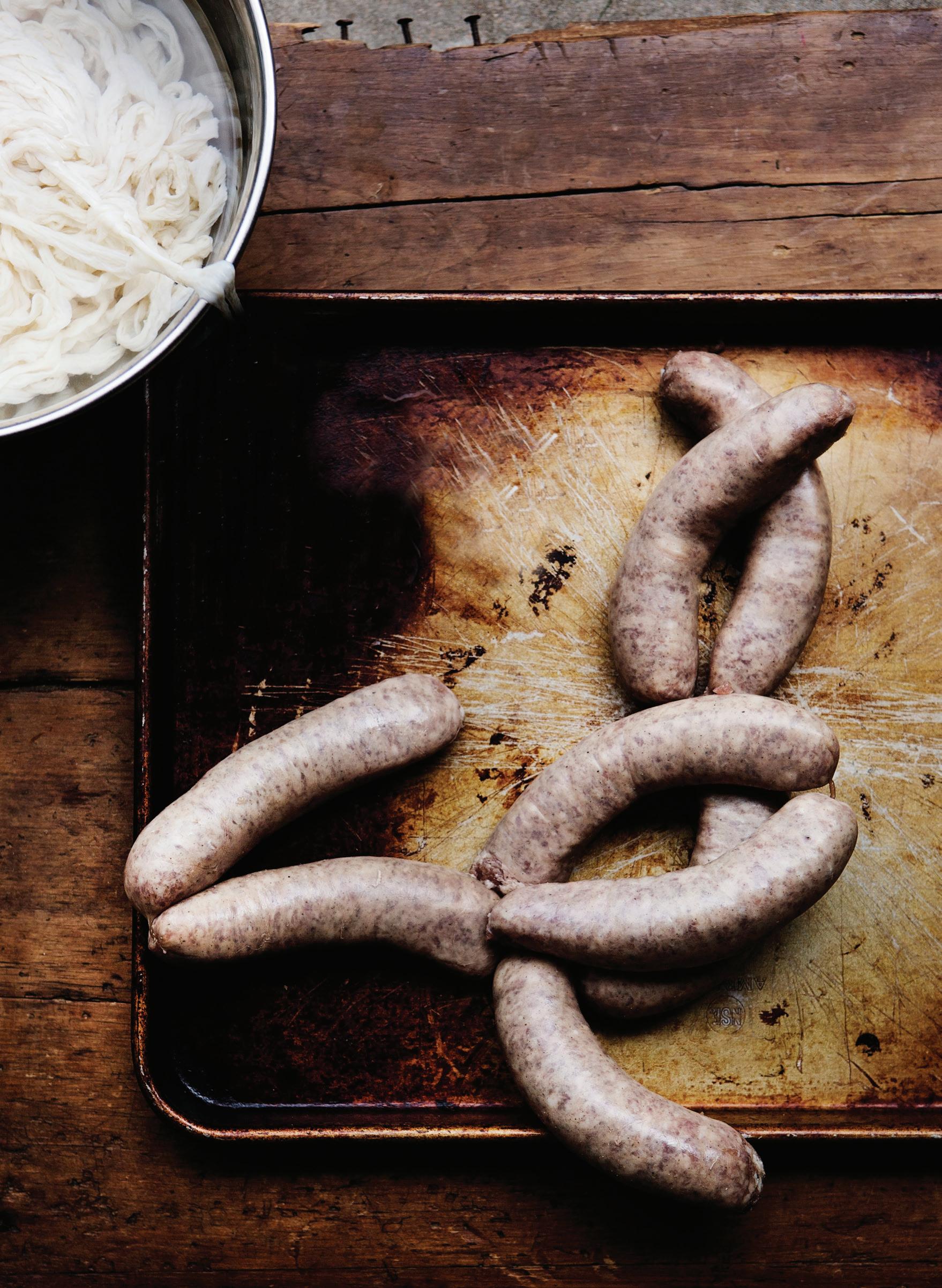
SAVE YOUR SAUSAGE
To keep meat from getting stuck in the grinder… keep the ingredients and the grinding equipment cold. There’s a lot of fat in sausages, and as it comes to room temperature and melts, it will start to look pink, not red and white. If it gets too warm, return the meat to the freezer to chill, remove the grinder and die, clean and try again.
To test flavor and texture before it’s too late… try the mix before stuffing the sausage by cooking a small patty in a stainlesssteel skillet over medium-low heat until meat is cooked through, about 4 minutes. Let it rest a few minutes, then cut it in half. It should hold together. Taste for seasoning and adjust as needed.
If the casing bursts during filling… pinch off on both sides of the tear, squeeze out meat in the middle, and tie off the casing. Give yourself 6 inches of slack on the nozzle and start again.
saucemagazine.com I SAUCE MAGAZINE I 41
brats made by marianne moore's father, joe kroupa




42 I SAUCE MAGAZINE I saucemagazine.com September 2017
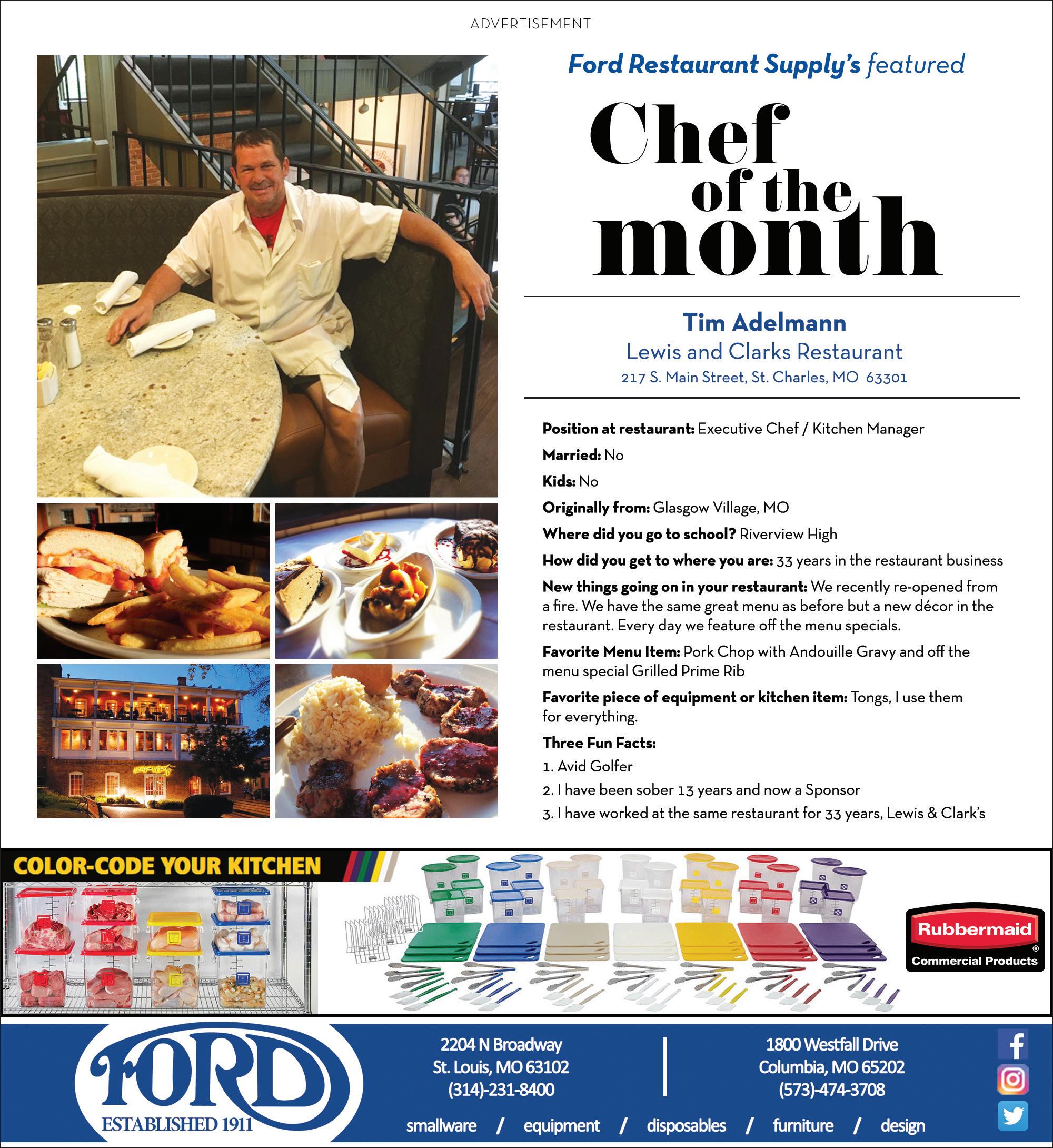
saucemagazine.com I SAUCE MAGAZINE I 43 September 2017
stuff to do: SEPTEMBER
BY CAITLIN LALLY

Havana Nights Celebration
Sept. 3 – 5 to 10 p.m., Cielo, Four Seasons Hotel St. Louis, 999 N. Second St., St. Louis, 314.881.5759, cielostlouis.com
Don’t let summer slip by without one final hurrah on Labor Day weekend. This Cuban-themed party features a menu with roasted snapper, smoked pork, ceviche and plenty of rum-based cocktails. Mojitos and Cuba libres are available, as well as imported brews. Keep cool with a mojito popsicle as the dance floor heats up with live Latin music and close out the night with fireworks. Reservations available online.

Sip & Savor Taste Event
Sept. 7 – 5 to 8 p.m., 1000 Lakeside Park Drive, St. Peters, 636.946.0633, foodfest370.com
Get a taste of what St. Charles County and surrounding areas have to offer at this annual event featuring more than 50 vendors including Firebirds Wood Fired Grill, Tucanos Brazilian Grill and Fuzzy’s Tacos. Between bites, sip pours from Cork & Rind, Third Wheel Brewing Co. and Augusta Wine Co. Catch live music from Wade Trent, Grant Cordell and Clayton Jones. Tickets available online.

St.
Louis Craft Spirits Cocktail Week
Sept. 9 to 17 –various locations, 314.231.2537, Facebook: St. Louis Craft Spirits Cocktail Week
Showcasing local gins, vodkas and whiskeys from around 20 area distilleries, savor a range of flavors from Spirits of St. Louis, The Big O, Lifted Spirits and more during this weeklong celebration. Stop by Lafayette Park for the kick-off cocktail party or dress to impress for the swanky Casino Royale Patio Martini Party. Complete schedule of events available online.

The Taste in Ferguson
Sept. 10 – 3 to 6 p.m., Savoy Banquet Center, 119 S. Florissant Road, Ferguson, 314.323.7436, thetasteinferguson.com
This familyfriendly event features samples from Sugarfire Smoke House, Pironne’s Pizzeria, Marley’s Bar & Grill and more. Don’t miss a heated cook-off when the city’s police department tries to take the trophy from the reigning champions, the Ferguson Fire Department. Cooking demonstrations, live music and kids’ activities rounds out this event. Tickets available online.

Wentzville
Beer, Wine & Food Festival
Sept. 23 – noon to 5 p.m., Friendship Brewing Co., 100 E. Pitman Ave., Wentzville, 636.856.9300, Facebook:
Wentzville Beer, Wine & Food Festival Celebrate the start of the harvest season with a community food festival complete with live music and familyfriendly activities. Taste test from around 30 local restaurants and breweries like Friendship Brewing Co., Missouri Beer Co., Stone Summit Steaks and Seafood and Old Town Smokehouse. Tickets available online.

Stubbornfest
Sept. 29 – 3 to 11 p.m. and Sept. 30 – noon to 11 p.m., Stubborn German Brewing Co., 119 S. Main St., Waterloo, 618.504.2444, Facebook: Stubbornfest
Traditional German Oktoberfest actually starts in September, and the Stubborn German crew are sticklers for tradition. Head to Waterloo for a slew of German brews, as well as brats and Schweinshaxe (roasted ham hock) available for purchase from Schneider’s Quality Meats. Don your lederhosen and practice your polka with live music from the Waterloo German Band, Bolzen Beer Band, Herb Eberle and Die Spitzbuam.
sponsored events
Food Truck Friday
Sept. 8 – 4 to 8 p.m., Tower Grove Park, 4256 Magnolia Ave., St. Louis, 314.772.8004, saucefoodtruckfriday.com
Gather your friends, grab a picnic blanket and head to Tower Grove Park for the next Food Truck Friday. More than 20 trucks join the festivities like Harvest Xpress, Totally Toasted and Clementine’s. Sip local pours from Urban Chestnut Brewing Co., 4 Hands Brewing Co. and Noboleis Vineyards while you enjoy live music from The Sleepy Rubies. This year, save time and skip the line – buy Speed Passes online and pick them up at the Sauce tent.
Taco-Rita
Sept. 22 – 4 to 9 p.m., Public Media Commons, 3653 Olive St., St. Louis, 314.772.8004, tacoritastl.com
The city’s top taco joints battle it out at TacoRita. Taste tacos from local restaurants like Catrinas, Mission Taco Joint, Cha Cha Chow and Taco Circus. Vote for your favorite and help them take the Taco-Rita title, while you enjoy signature margaritas available for purchase at a cash bar. Tickets available online.
Q in The Lou
Sept. 29 – 4 to 10 p.m.,
qinthelou.com
The scent of wood smoke returns to downtown St. Louis at Q in The Lou. This free barbecue festival features plenty of smoked meats and a chance to meet hometown and national pros like Sugarfire Smoke House’s Mike Johnson and Christina Fitzgerald, Pappy’s and Bogart’s Skip Steele, Memphis Barbecue Co.’s John David Wheeler and The Salt Lick BBQ’s Scott Roberts. VIP tickets available online.
44 I SAUCE MAGAZINE I saucemagazine.com September 2017
Sept. 30 – 11 a.m. to 8 p.m., Oct. 1 – 11 a.m. to 6 p.m., Kiener Plaza, St. Louis,





saucemagazine.com I SAUCE MAGAZINE I 45 September 2017
alisha blackwellcalvert WHAT I DO
Certified sommelier Alisha Blackwell-Calvert has a knack for navigation. She spends most of her time curating and guiding customers through Reeds American Table’s awardwinning wine list, but on Saturdays, she squires tourists about town in a carriage drawn by a horse named Moose. Blackwell-Calvert recently left a promising career in beverage distribution to reenter the restaurant industry as Reeds’ beverage director, and she hasn’t looked back. Here, she shares how she spends her downtime, her thoughts on wine in a can and what she wants to be when she grows up. – Catherine Klene

“I am a science geek. I love geology; I love geography; I love culture. I had no idea that … in wine, you put all these things together. … The geography of the place and what the people are like and what they eat, and this is the wine that they make and because the sun hits this hill at a certain angle, the grapes taste this way. My mind was blown.”
“I took the entrylevel sommelier exam through the Court of Master Sommeliers in Kansas City. I studied for months and months … and did very well. I felt very comfortable taking that test. After the test was over, and I got my little ‘You made it’ diploma, master sommelier Doug Frost leans over and says, ‘You should stick with this.’ … That was a big deal. It made my heart feel good.”
“It took me two weeks to think about [moving to Reeds]. I was very happy with Vintegrity and the hours and the flexibility. But I thought about my career and what I want to do when I grow up, if you will, and Alisha Blackwell-Calvert wants to be a master sommelier. It’s not something you can sign up for and it happens, but it’s what I want to work toward … and in order to do that, you need restaurant experience.”
“It’s not all glitz and glamour and slinging Dom. There’s a lot of hard work that goes into it. I’m constantly tasting. It’s a mountain of paperwork and spreadsheets. The fun part is hanging out on the floor trying to sell you a bottle, but there are hours and hours of work that go into making that moment happen for the guest.”
“Horses are my peaceful time, especially when I’m with my sweetheart, Moose. He’s so calm, and he’s so pretty, and he’s so friendly. We have a bond and a relationship that’s like no other. You can’t nuzzle up to a bottle of wine – or you could. I guess you could. It depends on what the wine is.”
“One thing I want to knock and can’t is wine from a can. I can’t knock it, I’ve had some good ones. They’re not all good, but the good ones are great. Friction makes really good wines in a can. … It’s like blueberry pie. I was like, ‘This is stupid – this is the worst idea ever,’ and then, ‘Aw crap, it’s good. Damn it.’”
“The typicallooking sommelier back in the day used to be the old white guy at the restaurant. Now it’s the young white guy at the restaurant, and I am neither of those things. Especially when you get to the master sommelier level, there are not a lot of people who look like me. … I don’t fit some people’s thought of how I should be. I don’t fit that stereotype or that mold. I don’t seek it out – I’m just me.”
REEDS AMERICAN TABLE 7322 Manchester Road, Maplewood, 314.899.9821, reedsamericantable.com
BY
PHOTO
ASHLEY GIESEKING

saucemagazine.com I SAUCE MAGAZINE I 47 September 2017



saucemagazine.com I SAUCE MAGAZINE I 3 Guide to Drinking 2017

GUIDE TO DRINKING
FREE, GUIDE TO DRINKING 2017 SAUCEMAGAZINE.COM ST. LOUIS’ INDEPENDENT CULINARY AUTHORITY
brandy cocktails from frazer’s, for more on this highclass spirit turn to p. 26

2 I SAUCE MAGAZINE I saucemagazine.com Guide to Drinking 2017



saucemagazine.com I SAUCE MAGAZINE I 3 Guide to Drinking 2017
Bud Light Lime is my go-to for easy-tofind, perfect-in-a-bucket beer that won’t leave you slobbering at the table while watching your favorite team. It might not be beer nerd-approved, but there is something about that sweet, zesty lime character paired with Budweiser’s adjunct lager graininess that gets me. Now American craft is jumping on the bandwagon, too, with these easy-drinking lime beers.
DRINK IN THE LIMELIGHT
BY KATIE HERRERA

DOGFISH HEAD SEA QUENCH ALE
Invigorating and fresh, this tart wheat beer is stacked with zesty lime notes on both nose and palate. Salt complements a fantastic grain bill that intensifies the beer’s texture and body. A nice rounded acidity completes this margarita-like beer, leaving you most certainly asking for una otra Six-pack: $12. Craft Beer Cellar, 8113 Maryland Ave., Clayton, 314.222.2444, cbcclayton.com
NEW BELGIUM BREWING CITRADELIC EXOTIC LIME
This mellow beer presents with just a hint of fresh lime that subtly hits your nose. A sweet grain character on the tip of your tongue and a balanced bitterness complement the light citrus character that
moves from the front palate to the back, disappearing with one quick swallow. Six-pack: $8. Lukas Wine & Spirits, 15678 Manchester Road, Ellisville, 636.227.4543, lukasliquorstl.com
UINTA BREWING LIME PILSNER
Clean and effervescent, this lime lager is reminiscent of those suckers you’d get at the drive-thru bank teller as a kid – you know, the ones with the looped stick. A big and bright limey nose gives way to a lightly sweet, yet balanced malt character. Is this just a glass of limeade? Either way, it’s delicious. Six-pack: $9. Friar Tuck, 4635 State Hwy. K, O’Fallon, Missouri, 636.300.4300, friartuckonline.com
TALLGRASS BREWING CO. KEY LIME PIE
Dessert-like and vivacious, this beer is like a heaping plate of Key lime pie complete with aromas of crumbly crust, fresh lime zest and just a hint of vanilla. The intense, sweet-tart flavors bounce around the palate. Six-pack: $12. Beer Sauce Shop, 318 Mid Rivers Mall Drive, St. Peters, 636.328.7972, beersauceshop.com
OLD BAKERY BEER CO. CERVEZA CON LIMA
Vibrant and refreshing, this bebida is super juicy with notes of ripe citrus upheld in the glass by a medium-bodied beer with a subtle but lacey head. Tart lime lingers across the palate as cereal permeates the nose. Four-pack: $10. Larder & Cupboard, 7310 Manchester Road, Maplewood, 314.300.8995, larderandcupboard.com
PHOTO BY IZAIAH JOHNSON





saucemagazine.com I SAUCE MAGAZINE I 5 Guide to Drinking 2017
TRENDWATCH
guide to drinking edition
BY CATHERINE KLENE, MEERA NAGARAJAN AND MATT SORRELL

SHAKE IT OFF
Love ’em or hate ’em, milkshake IPAs made a splash this summer. These creamy, dreamsicle-like IPAs are brewed with fruit and lactose sugars commonly used in milk stouts that gives their signature thick, rich mouth feel Pennsylvania’s Tired Hands and Sweden’s Omnipollo Brewing kicked off the trend in 2015 with the titular Milkshake IPA (with several variations to follow), and St. Louis brewers are also experimenting with the style. Jeff Hardesty at Narrow Gauge Brewing Co. released To the Yard (Peach), a rich, hazy IPA brewed with lactose sugar and aged on vanilla beans and peaches. Forthcoming Rockwell Beer Co. tried out the technique with a few versions of Meringue, a beer brewed with lactose, lemon and vanilla, including Coconut Meringue, Raspberry Meringue and Orange Meringue. A handful of milkshake IPAs were spotted at 2nd Shift Brewing’s annual Criderfest, including Nashville’s Southern Grist with its Guava Upside Down Cake (a double IPA brewed with guava, vanilla beans and lactose) and Windmill Brewing out of Indiana, which brought its Memes & Dreams, a lactose-fermented IPA with mangoes and vanilla.

to-drink list
The wine list has always had top billing at fine dining eateries, but many area restaurants are giving craft brews a place in the spotlight. Places like Vicia, Olive & Oak and Sardella boast a healthy mix of local, regional and international options. Retreat Gastropub describes its beer list like its wines, categorizing brews with helpful key characteristics. The Libertine pays homage to beer’s heritage with large-format German bottles, and Cleveland-Heath appeases both the workaday drinker and the craft fan with a list including Stag and offerings only available in Illinois like Surly Brewing Co. Some fine dining establishments even partner with local breweries to create custom beers for the restaurant like Side Project Cup of Love previously at Sardella; look for Perennial Ollie Ollie Oxen Free at Olive & Oak, Perennial Brew for the Crew at Farmhaus and Perennial Single Barrel Stout at Juniper
hot new pinots
German pinot noir, or Spätburgunder, is all the rage right now. In fact, it can prove difficult to find a bottle despite being the third-largest producer of pinot noir in the world. Why? Let’s just say German pinot noirs of the past didn’t taste good – thin and on the acidic side – because the weather was just not right for this grape. But due to recent rising temperatures and longer, sunnier days (thanks, global warming), the fruit now ripens better, making the resulting wine resemble an expensive Burgundy at an affordable price. Think light-bodied, refined reds with notes of red fruit that are delicate with a very dry, long finish. Find it on the shelf at Parker’s Table (a Koehler-Ruprecht 2013 Spätburgunder for $20), at the Wine Merchant (a 1 liter Heger 2014 Pinot Noir for $20) or order it off the wine list at Eleven Eleven Mississippi or 33 Wine Shop & Bar
powder powered
Instead of using traditional hop pellets, some brewers are sprinkling their beer with a little magic dust. 4 Hands Brewing Co brewer y manager Martin Toft used hop powder – aka cryogenically processed hops – in Loose Particles, a juicy Northeast-style IPA with Simcoe and Mosaic Toft said he can use significantly less product and get more aroma and flavor from the hops, and he’s already planning to hit more recipes with the powder next year 2nd Shift Brewing also experimented with Cryo Hops in its Equanot Experimental IPA, a light, clean brew with equanot hops.
canit
Canned wine sales are booming like never before as consumers shrug off the lowbrow stigma of popping a top to quaff their vino. In fact, Nielsen Company reported sales rose 125 percent from summer 2015 to summer 2016. The perks of canned wine are numerous. They’re eminently portable, perfect for the pool or float trips where glass is off-limits. No additional glassware – or a corkscrew – is required, and cans can be easier to recycle than bottles. Plus, more and more high-quality producers are now ensconcing their juice in aluminum, like Alloy Wine Works, which cans several of its wines, including Everyday Rose, (a Sauce office favorite), and Union Wine Co.’s Underwood line, which offers five canned varieties.

brain freeze
Frozen and blended drinks have experienced a resurgence of late, becoming a “thing” again at such highly regarded establishments as Diamond Reef in Brooklyn and Preux & Proper in Los Angeles. St. Louis has been getting in on the frosty action as well. Narwahl’s Crafted Urban Ice in Midtown has a dedicated menu of frozen delights that includes such concoctions as the Watermelon Frosé and the Rhubarb Paloma The Preston has brought out the blender to create drinks like the absinthe watermelon colada, and Porano has had great success with its über-popular Negroni Slushie
6 I SAUCE MAGAZINE I saucemagazine.com Guide to Drinking 2017




saucemagazine.com I SAUCE MAGAZINE I 7 Guide to Drinking 2017

8 I SAUCE MAGAZINE I saucemagazine.com Guide to Drinking 2017

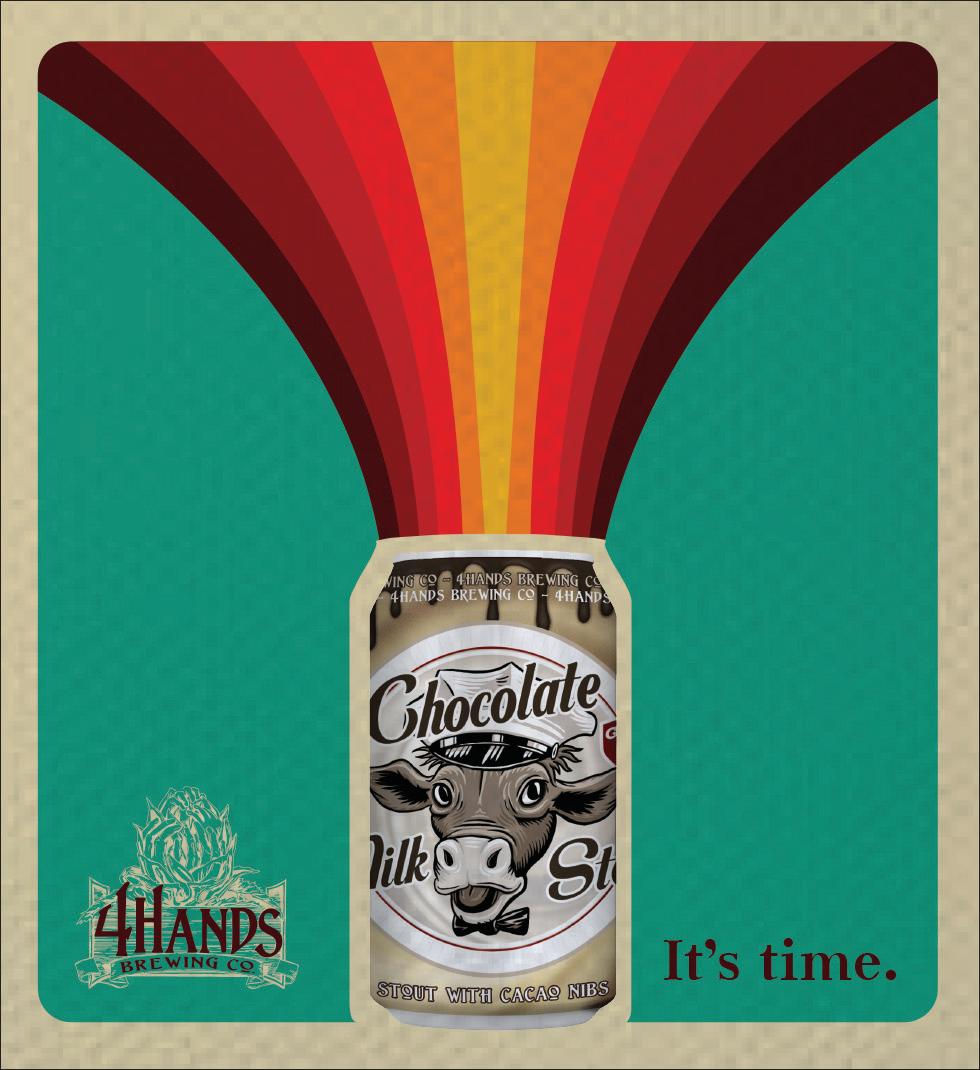




saucemagazine.com I SAUCE MAGAZINE I 9 Guide to Drinking 2017

wine, naturally
low-intervention wines are in high demand
BY HEATHER HUGHES
ifyou loiter in bottle aisles as long as we do, you’ve probably noticed the term “natural wine” popping up more and more in the past few years. In the age of knowing what your beef ate for breakfast, it’s no surprise that people are interested in a less processed version of their favorite beverage. But if you’ve been wondering what that bougie couple you eavesdropped on last time you were at Parker’s Table meant by “natural,” you’re not alone.
“There is actually no clear definition of natural wine,” said Rachel Shulman, Claverach Farm wine distribution manager. “Generally, natural wines are organic or biodynamic in the field. … [It’s] wine that’s made with minimal chemical inputs both in the field and in the cellar and minimal technological manipulation in the winery.”
For Shulman, if you’re going to put wine in your body, then you should know what’s in your wine. “Wine is an agricultural product,” Shulman said. “Because it’s in a bottle and you’re getting it in its packaged form, I think people forget that – it just seems so isolated from the farm. But as such, it can be processed and manipulated almost the same way processed food is.”
And that goes way beyond the infamous sulfites. Some natural winemakers still add a minimal amount of sulfites at bottling to stabilize their product for transport, which is why the term “low-intervention” may be more helpful than natural. But traditionally produced wines can be filled with all sorts of excessive additives for stability or improved flavor that legally need not be mentioned on the label.
But if you’re looking for a handy natural certification seal, you’re out of luck.
“Yeah, there’s no label,” Shulman said. “And honestly, most of the wines we work with that are organic or biodynamic don’t even have that label.” A lot of natural producers want to make the best wine they can with the best possible practices, but don’t have the time and money to pursue expensive certifications or the patience to avoid certain “non-organic” practices that aren’t harmful to their product or the environment.
“So it becomes like going to the farmers market, where it’s like: know your farmer. Know your
producer. Read up on them,” said Shulman. Go to shops with a focused selection of natural wines, like Parker’s Table, The Vino Gallery in the Central West End or Cork & Rind in St. Charles, where you can ask for help from experts. Or, if nothing else, look for small artisanal producers more likely to keep things low-tech.
Like Claverach, for instance. It isn’t certified organic, but it is farmed with sustainable biological methods. Best known for idyllic farm-to-table dinners in Eureka, it’s also one of the only natural wine producers in the state of Missouri.
“It’s always been a labor of love –why we grow vines and grow them the way we do,” said Shulman. “It’s so different from any other Missouri vineyard, what we’re doing here.”
Grapes at Claverach are handharvested, allowing the vines to be planted close together on the farm’s hills for lower production of better fruit, rather than in wide rows on flat land to accommodate machines. That also means rotten bunches of grapes are easier to find and discard at harvest instead of accidentally getting lumped in with the good stuff, lowering the wine’s quality and forcing winemakers to throw in sugar and other additives to make their product drinkable.
Claverach owner Sam Hilmer has followed the natural winemaking mantra of “nothing added, nothing taken away,” making wine with mostly just grapes, labor and time since 2002. But Claverach bottles were harder to find before 2016, when the farm started a boutique distribution company spearheaded by Shulman.
The farm produced only about 100 cases last year, but sales have increased dramatically. “We aren’t even close to meeting demand. … Our rosé sold out in two weeks, and the red sold out in one week. They were just gone. And that’s not
even trying to sell any to New York or the West Coast. It was a real wake-up call to what the demand is if we have the sales channel.”
But production isn’t the only departure from traditional winemaking; differences show up on both the palate and the ingredients list. “Basically all of these [traditional] winemaking techniques are in place both to clean up bad wine and make wine more consistent across vintages,” Shulman said. “What the average consumer is looking for in wine is actually just consistency. It’s like buying paper towels, you know: That’s my brand. I buy Brawny, or whatever.”
When you can’t depend on artificial stabilizing agents, sugar and other flavor additives to even things out, your wine gets real weird real fast. It’s harder to make, harder to make well and, in some cases, less approachable even when done right. All of which is a challenge enthusiasts like Reeds American Table advanced sommelier Andrey Ivanov can get into. “There’s a lot of bottle variation, and some bottles may show incredibly, incredibly well and some of them will not,” he said. That either makes every cork a thrilling gamble or just makes selling the stuff more difficult, depending on your perspective.
Typically, natural wine isn’t as sweet, and quality bottles don’t always see time in oak. It can be cloudy since it isn’t always filtered. “It’s challenging those conventions that wine has to be clear, has to be fruity,” said Ivanov. “The wines that come out often times are a little bit more tart, a little bit more funky, a little more acidic or raspy.” It’s not what you’d expect in your favorite big-name cab, but if you like sour beer you’ll be into it.
Ivanov also thinks it goes over well with vegetarians. “In my experience, people have been more into these wines when they
eat more of a savory and slightly bitter, slightly tart flavor profile –which is what vegetarian and vegan diets include.”
That may explain why Vicia, with its vegetable-focused, inverted meat-and-potatoes menu, has such an excellent natural wine selection.
The wine and the food “all have to speak to each other,” said Vicia coowner Tara Gallina. “Our cuisine is very simple in the sense that we don’t want to manipulate a lot of the product that we have – it’s really just about using the best product we can get so it just tastes the way it’s supposed to taste. So the wines probably fall in that same line.”
Like chef-owner Michael Gallina when he sources produce for the kitchen, assistant general manager Jen Epley always asks how the grapes are farmed and the wine is made when selecting bottles for Vicia’s list.
To go all natural, “you have to be somebody who’s open to going on a little bit of an adventure,” Tara Gallina said. “You know, trying something outside your comfort zone, also being accepting that you’re taking a risk and you may hate it. But I think that’s a part of the fun.”
Claverach Farm, claverachfarm.com
Cork & Rind, 555 First Capitol Drive, St. Charles, 636.896.4404, corkandrind.com
Parker’s Table, 7118 Oakland Ave., St. Louis, 314.645.2050, parkerstable.com
Reeds American Table, 7322 Manchester Road, Maplewood, 314.899.9821, reedsamericantable.com
Vicia, 4260 Forest Park Ave., St. Louis, 314.553.9239, viciarestaurant.com
The Vino Gallery, 4701 McPherson Ave., St. Louis, 314.932.5665, thevinogallery.com
saucemagazine.com I SAUCE MAGAZINE I 11 Guide to Drinking 2017




12 I SAUCE MAGAZINE I saucemagazine.com Guide to Drinking 2017

saucemagazine.com I SAUCE MAGAZINE I 13 Guide to Drinking 2017




14 I SAUCE MAGAZINE I saucemagazine.com Guide to Drinking 2017

saucemagazine.com I SAUCE MAGAZINE I 15 Guide to Drinking 2017 welcome to the farmhouse
by STACY SCHULTZ \\ photos by JULIA CALLEO
WHITE ROOSTER FARMHOUSE BREWERY MAKES SPARTA, ILLINOIS, A BEER DESTINATION
from left, white rooster farmhouse brewery coowners chris van horn, eric ogilvie and mike deutschmann
Sitting at the bar at White Rooster Farmhouse Brewery, I’m nervous. I definitely like beer. I always grab craft over the big guys at the store, but I can’t identify hops or define the mash or debate fermentation methods. In a city where beerlovers can spend hours geeking out on the finite details of every brew, I simply can’t hang. I’m not a beer nerd.
Plus, I know that after sipping suds at White Rooster’s bar, I have to drive the hour and a half back home to St. Louis – on the winding road flanked by corn stalks that a bright red scooter led me down on my way out here. Back down Illinois Route 15, through East St. Louis and over the Eads Bridge. Just thinking about my trip home, I can’t help but wonder: How many people would really travel so far to this Illinois town of fewer than 5,000 for a pint when Missouri is practically busting at the seams with outstanding brews?
As a husband and wife shuffle up to the bar from the side patio door, I get my answer. They came from Scratch Brewing, a craft brewery in Ava, Illinois, where they were told to make the 40-ish-minute trip to White Rooster where “everything is good.” This has become more common, coowner Eric Ogilvie tells me, as a decent chunk of White Rooster’s sales are beginning to come from the St. Louis crowd. The couple orders a sour and a Northeast-style IPA and sit down at one of the small wooden tables in front of the bar. Seconds after their first sips, the couple’s praising Ogilvie and his co-owners Chris Van Horn and Michael
Deutschmann, pummeling them with questions and asking for recommendations.
At the other end of the bar, a guy in a Narrow Gauge Brewing T-shirt is paying his tab. You can see the delight in all three owners’ faces as he, too, compliments them on their Northeast IPA. This kind of beer, also called New England-style, is less bitter than traditional IPAs, Ogilvie explains to me, thanks to late and dry hop additions. The man is the assistant brewer at Narrow Gauge, a Florissant craft brewery known for its stellar Northeast-style IPAs.
White Rooster wasn’t supposed to be inside this open-space roadside spot that’s housed everything from a Kroger to a video rental store over the years. Back when the trio began thinking seriously about opening a brewery (after faring surprisingly well at local homebrew competitions), they wanted it to be on Ogilvie’s parents’ property about 4 miles east where they held annual Classy Homebrew Throwdowns.
“We would just basically crank out as many homebrews as we can and have a great big party,” Ogilvie tells me, smiling. “Ya know, the name – it’s sarcastic. Because there was nothing classy about what we were doing.”
But when the neighbors didn’t see the value of adding a brewery to the area, the trio had to re-punt. They found this space in town and tapped their training as a sheet metal worker, a pipe fitter and an iron worker to handle about 80 percent of the rehab themselves. Finally, they had a location.
They had a name, too: White Rooster, after Ogilvie’s pet
rooster, Joe, who was “white and pretty tame. You could hold him and carry him around and stuff,” he says with a boyish giggle. “We’re pretty Hoosier.” And they had a plan for the beer: farmhouse style – barrelaged, sours, wild fermentation methods and yeast-driven flavors – “ya know, funky stuff,” Ogilvie says with another chuckle.
Back at the bar, I tell Ogilvie to give me anything. He holds a glass to a tap and fills it with a clear, golden liquid aptly named Gold Rush, the Northeast-style IPA that everyone was raving about just minutes earlier. (Ogilvie and Deutschmann are huge Scorcese fans and are having a blast with mob-themed names for their brews.) It’s good – really good – and sans the smack-you-in-the-face bitterness I find in most IPAs. I can actually taste the fruitiness of the hops. This is an IPA I could drink and drink and drink
Next, he pours me the Strawberry Kairos, one of White Rooster’s Farmhousestyle sours that’s been fruited with strawberries from a nearby orchard. After selfdeprecatingly admitting I’ve never cared much for sours, I take my first sip – slight sourness balanced perfectly by juicy strawberry natural sweetness – and fall in love.
These are funky beers for people who don’t usually like funky beers. And for people who do. That’s the thing about this place: A tucked-away spot inside a tiny Illinois town, named after a pet rooster and inspired by an ironically named farm party is turning out fantastically innovative beer that’s making brewers, beer-lovers and even novices ask for another. I’d say that’s worth traveling for.


WHITE ROOSTER FARMHOUSE BREWERY
113 W. Jackson St., Sparta, Illinois, 618.449.2077, whiteroosterfarmhousebrewery.com

Sauce editors Heather Hughes and Catherine Klene and staff writer Matt Sorrell join St. Louis on the Air to discuss this year’s Guide to Drinking. Tune in to 90.7 FM KWMU to learn more about what’s trending in the St. Louis drinking scene.
16 I SAUCE MAGAZINE I saucemagazine.com Guide to Drinking 2017
top: from left, kairos and gold rush, a northeast-style IPA; bottom: the bar at white rooster farmhouse brewery

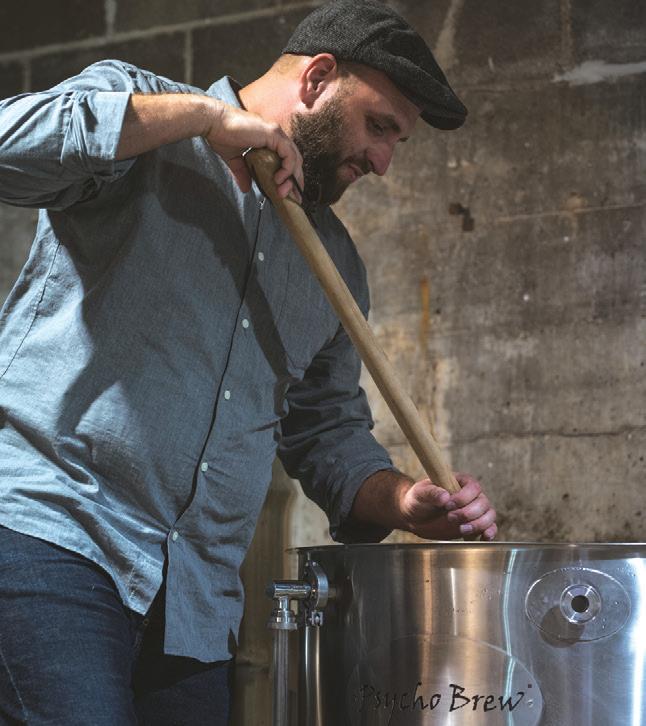


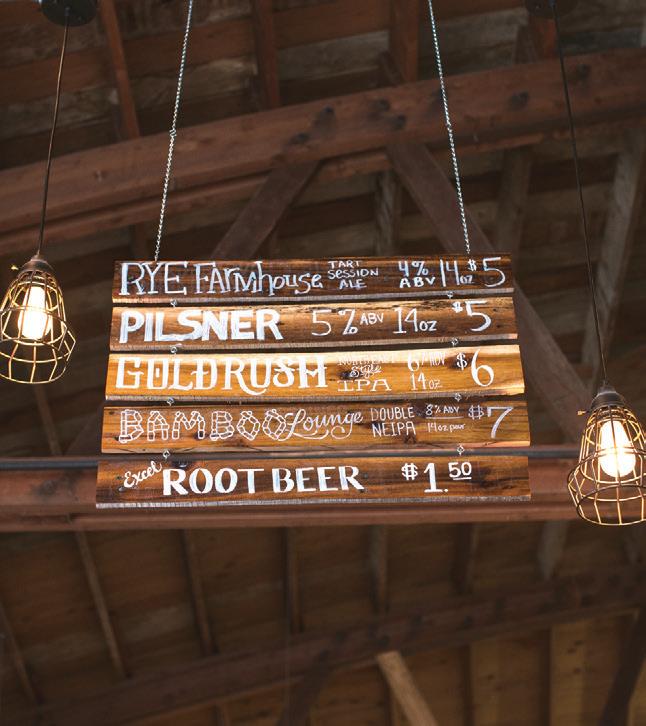
clockwise from top left, a bartender pulls a pour, white rooster in sparta, the rotating draft list, an oak barrel for aging beer, taps at white rooster, the tasting room bar, bottles and growlers available to go at the brewery, co-owner eric ogilvie brews



saucemagazine.com I SAUCE MAGAZINE I 17 Guide to Drinking 2017





18 I SAUCE MAGAZINE I saucemagazine.com Guide to Drinking 2017

saucemagazine.com I SAUCE MAGAZINE I 19 Guide to Drinking 2017
where everybody knows your name
by matt sorrell \\ photos by izaiah johnson
The neighborhood bar. Some think there should be a pool table present; others, a jukebox in the corner, maybe karaoke or trivia nights on the regular. But these are merely amenities. The key to a neighborhood bar is the neighborhood engendered and cultivated inside four unique walls. It’s where patrons can sing along to the music or dance by themselves like no one’s watching, where they’re not judged for tipping back one too many or cheering too vociferously (or lamenting too loudly) for their favorite team. The neighborhood bar is personal.
I’ve read various articles recently that sound the death knell for the neighborhood bar, each bemoaning that times are hard, margins are thin, and competition for customers and their dollars is stiff. All true. It’s hard to say goodbye when beloved institutions languish, but don’t count out these watering holes just yet. There are many St. Louis spots that still engender a sense of community and provide a much-needed respite from the day-to-day grind.
This isn’t an elegy – it’s an invitation. Pull up a stool and join the family.
During the day at Harlem Tap Room, on a quiet stretch of Dr. Martin Luther King Drive in North City, the liquor still flows generously from the selection of handles on the back bar. But the crowd is sparse, and the pace is decidedly laidback compared to the p.m. hours, when things can get a bit … animated, especially as the electronic darts games start to heat up. When the sun is out, people tend to pop in, sit a spell, have a nip, make some small talk with the bartender, then move along. While I sip on my bourbon, a couple of guys in workman’s coveralls eat takeout at the bar from Brother’s Diner around the corner, and a young woman in impossibly tight pants sways slowly to the classic soul dripping from the speakers, waiting her turn for the ladies’ room. It’s dark and cool inside, and I very much want to skip out of my afternoon commitments, have another round, and just let the day get away from me. Productivity be damned!

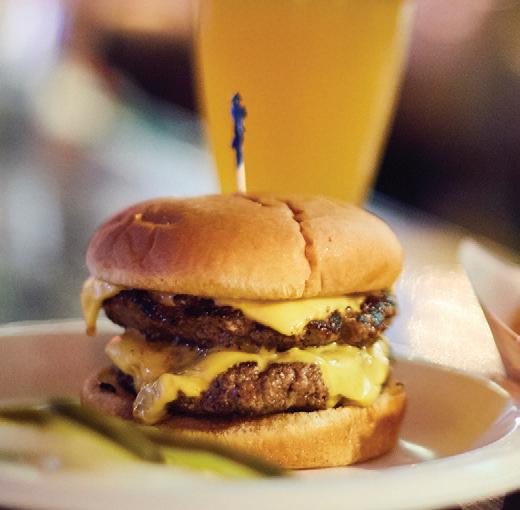

Doc Haus is located in an old South City bungalow, and if it weren’t for the large Budweiser sign looming over the front yard, it’d be virtually
6 neighborhood bars we love
patrons gather at the hideaway
cheeseburgers are a sure bet at the village bar
indistinguishable from its neighbors. This place is from another time: Cigarette smoke wafts from the patio, there are framed newspapers in the men’s room celebrating the Rams’ 1999 Super Bowl victory, and cash is the only recognized form of payment. The first time I hit up Doc Haus, it was a raucous Saturday night with folks three deep at the bar. Later, I stop in for a midday nip. The front windows are open and a warm breeze wafts through, making it feel like an urban beach shack. The only folks there besides me are a pair of
HARLEM TAP ROOM
4161 Dr. Martin Luther King Dr., St. Louis, Facebook: Harlem Tap Room Est. 1946 THE HIDEAWAY 5900 Arsenal St., St. Louis, 314.645.8822, Facebook: The Hideaway
609 N. New Ballas Road, Creve Coeur, 314.569.1769, The Hive
SPORTSMAN’S PARK 9901 Clayton Road, Ladue, 314.991.3381, sportsmanspark ladue.com
THE VILLAGE BAR
12247 Manchester Road, Des Peres, 314.821.4532, Facebook: The Village Bar
20 I SAUCE MAGAZINE I saucemagazine.com Guide to Drinking 2017
DOC HAUS 6217 Morgan Ford Road, St. Louis, 314.352.4465,
Facebook: Doc Haus
THE HIVE

the village bar

jorts-clad duffers at the end of the bar talking golf swings, and the bartender, who has a mirror set up on one of the tables and is touching up her makeup. Just another day on the south side…
I drop by The Hive in Creve Coeur on a Sunday afternoon. Surrounded by offices and strip malls, all deserted on a Sunday of course, I wonder if the place is even open. But inside, the bar is packed tight. The beefy guy on the stool beside me adjusts his camo-patterned baseball cap and orders a shot of tequila. Based on the conversation I overhear, it’s an effort to keep the dog that bit him the night before at bay – it’s almost 2 p.m., so that dog must’ve bit hard. The mood is convivial, and oddly domestic, a little bit like a tipsy PTA meeting. TVs abound, and there are a few fans watching basketball, but it’s more about the interaction here than the game. The topics of the various conversations range from the upcoming Billy Joel concert (“Tickets are how much?”) to the ungodly times kids soccer games start on weekend

mornings. I order a Wild Turkey, and the bartender feels comfortable enough to let one of the regulars crack the seal on the new bottle for her while she runs a pizza and a grilled cheese to the other side of the bar, an act of trust you’re not likely to see at the average corporate joint.


is a sports bar. I mean, the tabletops are in the shapes of baseballs and footballs, for crying out loud. But Sportsman’s Park transcends that worn-out moniker. The Cardinals are playing as I nurse my drink, but no one is glued to the game. Instead, an older gent at the end of the bar is helping the bartender cut out coupons from the weekend Post-Dispatch, and a couple of middle-aged matrons next to me gab about their neighbors over glasses of white wine spritzers, with nary a mention of the score. Ladue is often pigeonholed as a swank destination – a bit highfalutin’, if you will – but the vibe at Sportsman’s Park is more backyard barbecue than garden party. Drop in and sit a while.
A longtime fixture on Arsenal Street, The Hideaway is known for hosting live piano music (a definite mustsee) and karaoke, as well as offering some of the cheapest beer around, especially during Cards games. On my most recent Saturday afternoon visit though, the only music happening is courtesy of the
jukebox, which is cranking out the soundtrack of my adolescence from REO Speedwagon to Foreigner and beyond. I’m minding my own business, sipping one of the aforementioned cheap brews, when I overhear one of my all-time favorite bar stories: A kid in a snap-back STL cap is telling a burly, bearded guy in a Blues jersey about a friend living in Pakistan who trips by smoking scorpion venom. Apparently said friend discovered a way to dry the substance out into powdered form. How he milks the scorpion isn’t revealed or, oddly, even speculated upon. The Hideaway changed owners a year or so ago, and a lot of diehards were concerned the place would change as well. No worries, though. The soul of the space, like the orange shag carpeting that adorns the front of the bar, remains intact.
What with the name of the bar, the games playing on the TVs and the amount of sports memorabilia scattered throughout, you’d think Ladue’s Sportsman’s Park
Back in my youth, The Village Bar in Des Peres was my go-to for cold pitchers of Bud and some of the best cheeseburgers and handcut onion rings around. It’s changed a bit over the years – the bar recently expanded into the former wig shop next door, so there’s a lot more seating – but the well-worn shuffleboard table remains, the globe light sporting Budweiser Clydesdales pulling a beer wagon continues to hang above the bar, and the food is still pretty solid. While a few solo drinkers dot the bar each time I go back, the rest of the room is filled with a broad cross section of the local citizenry: a group of kids and coaches celebrating their soccer game, couples getting out of the house for some beers and waffle fries, bros high-fiving and cheering on whatever teams are playing on TV. A village, indeed.
Editor’s note
According to its Facebook page, Harlem Tap Room was closed for renovations at press time.
22 I SAUCE MAGAZINE I saucemagazine.com Guide to Drinking 2017
the hideaway
the village bar

saucemagazine.com I SAUCE MAGAZINE I 23 Guide to Drinking 2017
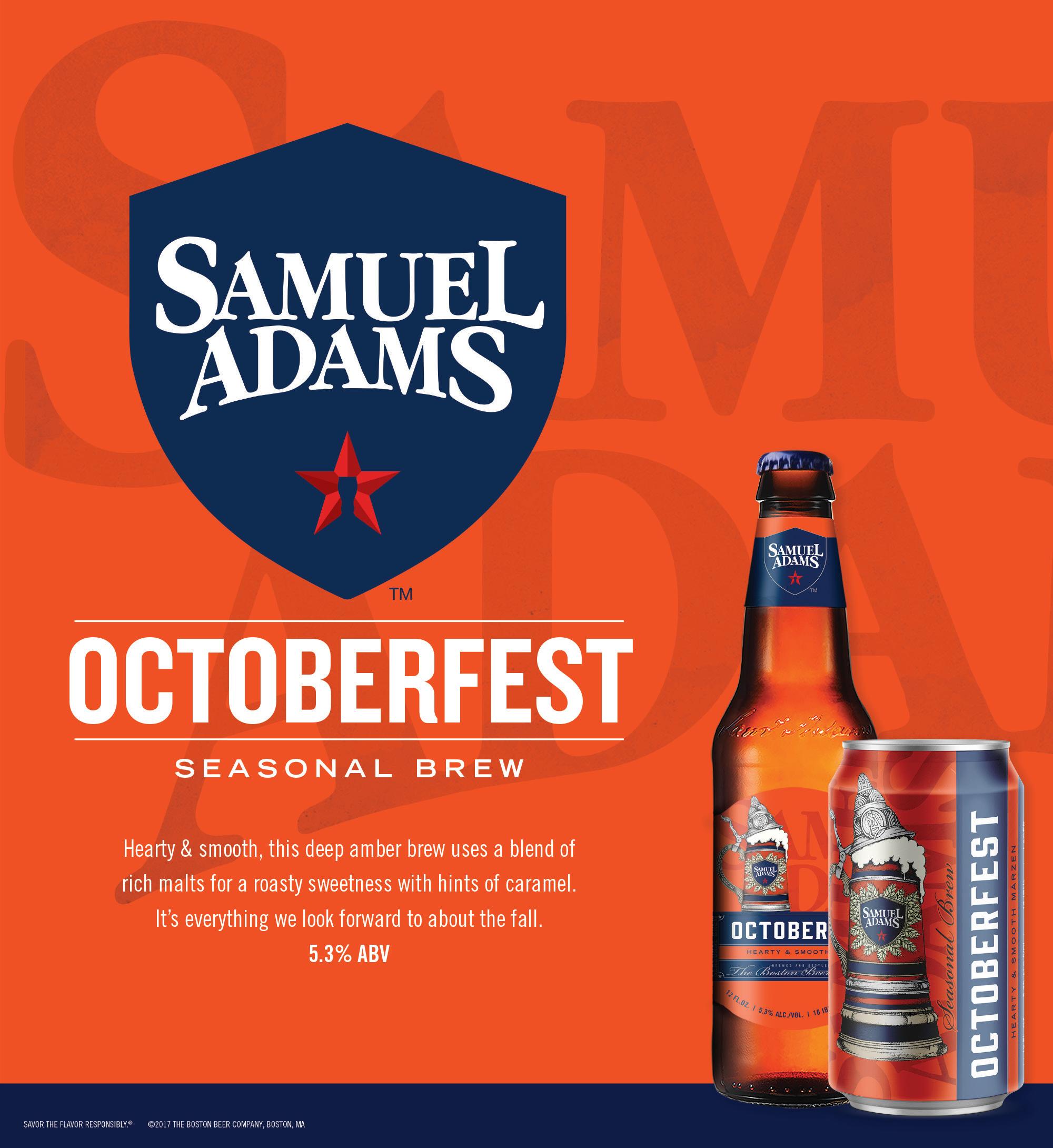
24 I SAUCE MAGAZINE I saucemagazine.com Guide to Drinking 2017



saucemagazine.com I SAUCE MAGAZINE I 25 Guide to Drinking 2017

brandy beguiles a new generation
BY KRISTIN SCHULTZ
hese days, people are
more likely to get excited about the ’90s R&B Brandy than the oft-overlooked spirit. Perhaps it’s the confusing nomenclature: What’s the difference between Cognac, Armagnac and schnapps? Maybe it’s brandy’s stuffy, cigar-jacketed image –it just isn’t considered as sexy as whiskey (or as catchy as “The Boy Is Mine”).
“People in France tend to think of it as an old man’s drink,” said Planter’s House coowner Ted Kilgore.
But brandy – broadly defined as a spirit distilled from fermented fruit juice –is making a comeback among some distillers and barkeeps keen on pouring classic cocktails that take advantage of its unique qualities of fruit, terroir and aging. It’s really the original American booze – the first distilled in the U.S. Most are made with grapes by distilling wine and aging the distillate in wood barrels, but the first American version was probably an apple brandy made in the mid-1600s, well before rye whiskey and bourbon. Some of the oldest classic cocktails, like the sidecar, are built on brandy, and others, like the typically rye-based Sazerac, were originally made with brandy.
From the time of the tricorn hat onward, however, the fanciest Americans were (and still are) drinking Cognac. To be called Cognac, brandy must be made in the namesake region of France and distilled twice in a pot still. And since we’re talking about France here, Cognac was one of the first quality-controlled brandies –
which partially accounts for its longstanding baller status. The most lauded brandies still come from Cognac.
Similarly, Armagnac the spirit is produced in the more southern Armagnac region of France, though this one is made in a column still. Due to variations in grape blends and terroir, Armagnac has a younger, rowdier character than its sophisticated cousin from the north.
There are so many kinds of Cognac and Armagnac that describing them is kind of like trying to give tasting notes for “red wine,” but in general, Cognac is smooth and round with subtle earthy and fruity notes and softly fades to a smooth, dry finish. Armagnac has a butterscotch nose and is spicier and punchier up front than Cognac.
In true cowboy fashion, American distillers are working to give these OG French producers a run for their euro. In April, a group of makers and industry pros met for the first California Brandy Summit and left resolved to further the craft and raise the status of California brandy. We’ve all come a long way since our utilitarian pre-revolutionary days.
“It’s an interesting time to watch things change,” said Kilgore, noting an increase in the production of apple brandies from American producers.
Closer to home, award-winning brandy is being made just outside of Marthasville, Missouri. Edelbrand Pure Distilling specializes in fruit brandies (those made with something other than grapes). Owners Martin Weber, Lynn DeLean-Weber and Tess DeLean have only been distilling since 2014, but Edelbrand apple brandy infused with plum snagged a gold medal at this July’s Washington Cup in Kansas City, and will be put through to a second round of national competition. The distillery’s apricot and grape brandies each took silver medals. Edelbrand walked away with plenty of bling at the
Mid-American Wine Competition as well: a gold medal and Best Spirit designation for its plum brandy, silver medals each for its apricot and grape brandies and a bronze for its apple brandy infused with plum.
“We’re still floating on a cloud,” said DeLean-Weber. “You can’t wipe the smile off his face.”
That face belongs to her husband, Martin. He was born and raised in the Swiss canton of Graubünden, where an after-dinner glass of schnapps was tradition. Schnapps can refer to many infused spirits or liqueurs, but is commonly a standin for fruit brandy. In Switzerland, they’re not the syrupy, tooth-gratingly sweet swill marketed to unsuspecting college students. Rather, Swiss schnapps are dry and complex, focused on the essence of the fruit.
“This is something that was part of his heritage,” DeLean-Weber said. “Martin wanted to try it. I told him, ‘If you can make it, I think I can sell it.’”
It takes about 15 to 18 pounds of pears to make one 375-milliliter bottle of Edlebrand’s pear brandy. The distillers started with a 7-gallon still, then acquired a 12-gallon still and in 2015 got an 18-gallon still. This year they have produced just fewer than 1,100 bottles.
“The big guys spill more in an hour and we make in a year,” said DeLean-Weber.
What Edelbrand does make can be found at local restaurants like Annie Gunn’s, YaYa’s, Acero and Stone Soup Cottage. To take a rare bottle home, keep an eye out at The Wine and Cheese Place and Vom Fass.
With both grape-based brandies and the clear, essential versions with pear, plums or apricots sneaking back into more cocktails and menus, you may soon ask yourself: Have you ever loved some bottle so much it makes you cry?
HOW OLD’S YOUR HENNESSY?
Cognacs and Armagnacs have standard designations and (not very clever) abbreviations. While these may sound pretentious AF, knowing the lingo should make your trip to the liquor store easier.
VS (Very Special) The youngest brandy blended into VS Cognacs is at least 2 years old, while VS Armagnacs all have to be at least 1 year old.
VSOP (Very Superior Old Pale) The youngest eau de vie in both Cognac and Armagnac VSOP brandies has to be at least 4 years old.
XO (Extra Old) Extra old means 6 years for Cognacs and Armagnacs.
saucemagazine.com I SAUCE MAGAZINE I 27 Guide to Drinking 2017
BOTTLES TO BUY
Ready to be wooed by a bottle of brandy? Check out these pro picks ranging from wallet-friendly to impress-the-boss.
Cognac Claude Chatelier VS With lots of fig, apricot and peach on the nose, this rich, full Cognac finishes with a dry, lingering spiciness. Its quality far exceeds the price tag. $20. Trader Joe’s, various locations, traderjoes.com
Camus VS
A bar rail standard, the Camus VS is primarily floral with notes of honeysuckle, honey and caramel. $25. The Wine and Cheese Place, 7435 Forsyth Blvd., Clayton, 314.727.8788, wineandcheeseplace.com
Pierre Ferrand 1840
Spicy and bold, this is a great Cognac for cocktails. $43. The Wine and Cheese Place
Camus Île de Ré Cliffside
Aged in a cellar overlooking the Atlantic Ocean, the Cliffside is mellow with orange and dried grape notes. $80. The Wine and Cheese Place
Leopold Raffin Cognac XO
The oldest of the bunch, this XO Cognac features delicate and smooth peach and almond notes. $130. The Wine and Cheese Place

28 I SAUCE MAGAZINE I saucemagazine.com
PHOTO CARMEN TROESSER
from left, the fine and dandy and sidewinder from frazer’s terry oliver

SIDEWINDER
Courtesy of Frazer’s Terry Oliver
1 SERVING
1 oz. Big O Ginger Liqueur
1 oz. Camus VS
1 oz. Rothman & Winter apricot liqueur
¾ oz. lemon juice
Lemon twist and mint, for garnish
• Combine all ingredients in shaker and fill twothirds with ice. Shake vigorously 20 seconds and strain into a rocks glass with 1 large ice cube. Garnish with the lemon twist and mint.
FINE AND DANDY
Courtesy of Frazer’s Terry Oliver
1 SERVING
1½ oz. Camus VS
1 oz. Plantation 5-year rum
1 oz. Velvet Falernum
1 barspoon absinthe
1 dash Angostura bitters
1 dash chocolate bitters
1 dash orange bitters
Lemon twist, Thin Mint cookie and sea salt, for garnish
• Combine all ingredients in a mixing glass and fill two-thirds with ice. Stir 30 seconds and strain into a chilled coupe glass. Garnish with the lemon twist and a Thin Mint cookie with sea salt.
SAZERAC
Courtesy of Planter’s House’s Ted Kilgore
¼ ounce absinthe
2 oz. Camus VS or Pierre Ferrand 1840
½ ounce simple syrup (equal parts water and sugar)
6 dashes Peychaud’s Bitters
Lemon twist
• Pour the absinthe into a highball glass and swish around, coating the sides and bottom of the glass. Discard remaining liquid.
• Combine the Cognac, simple syrup and bitters in a shaker and fill two-thirds with ice. Stir 30 seconds and strain into the absinthe-rinsed glass. Twist the lemon over the drink and discard the peel.
saucemagazine.com I SAUCE MAGAZINE I 29

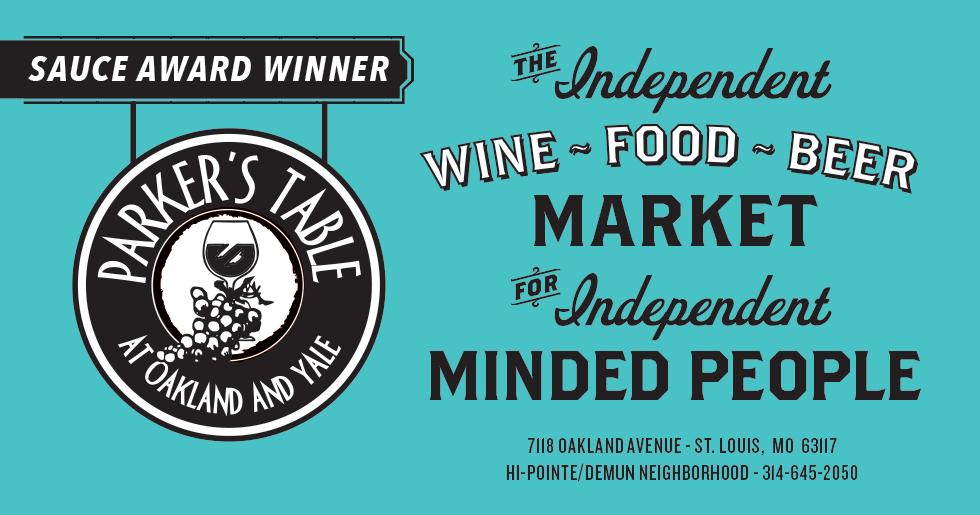




30 I SAUCE MAGAZINE I saucemagazine.com Guide to Drinking 2017

saucemagazine.com I SAUCE MAGAZINE I 31 Guide to Drinking 2017
BUDGET BOOZE

Great King Street Glasgow Blend
Scotch is expensive. This smoky, peaty, blended bottle from Compass Box is a tasty and economical intro to the heavier flavors of Islay. $35. Lukas Wine & Spirits, 15678 Manchester Road, Ellisville, 636.227.4543, lukasliquorstl.com
Looking for quality spirits at swill prices?
From third party-manufactured house brands to underpriced hidden gems, here are some first-rate options that won’t break the bank. – Matt Sorrell
El Dorado 5-Year Rum
Made in wood stills in Guyana, this rum is way cheaper than it should be. Five years in used bourbon barrels produces a panoply of flavor notes from dried fruit to caramel.
$20. Randall’s Wine & Spirits, various locations, shoprandalls.com
Trader Joe’s The Art of The Still Organic Gin
Not as juniper-forward as a London dry, TJ’s martiniworthy New Western-style gin is clean, crisp and citrusy. $14. Trader Joe’s, various locations, traderjoes.com
Trader Joe’s
Single Malt Irish Whiskey
Sweet and floral with just a touch of smoke and leather, this whiskey is aged in oak for eight years. $25. Trader Joe’s, various locations, traderjoes.com
Schnucks
Private Stock
Bourbon
A 100-proof high-rye bourbon sourced from a well-regarded distillery on Kentucky’s Bourbon Trail, this house brand unicorn strikes a delicious balance between boozy, spicy and smooth. $13. Schnucks, various locations, schnucks.com
PHOTO BY JONATHAN GAYMAN




saucemagazine.com I SAUCE MAGAZINE I 33 Guide to Drinking 2017








































































 Savory Caprese Panini
Savory Caprese Panini
































































































































